
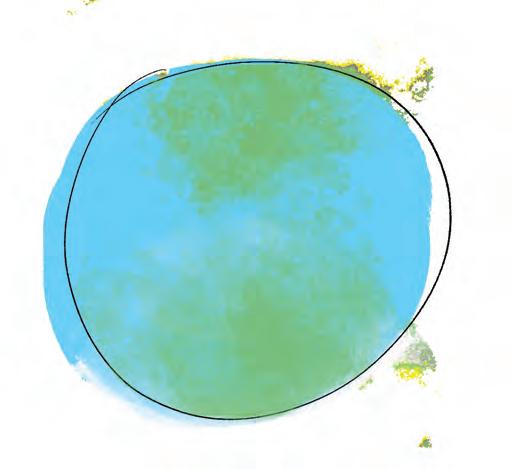


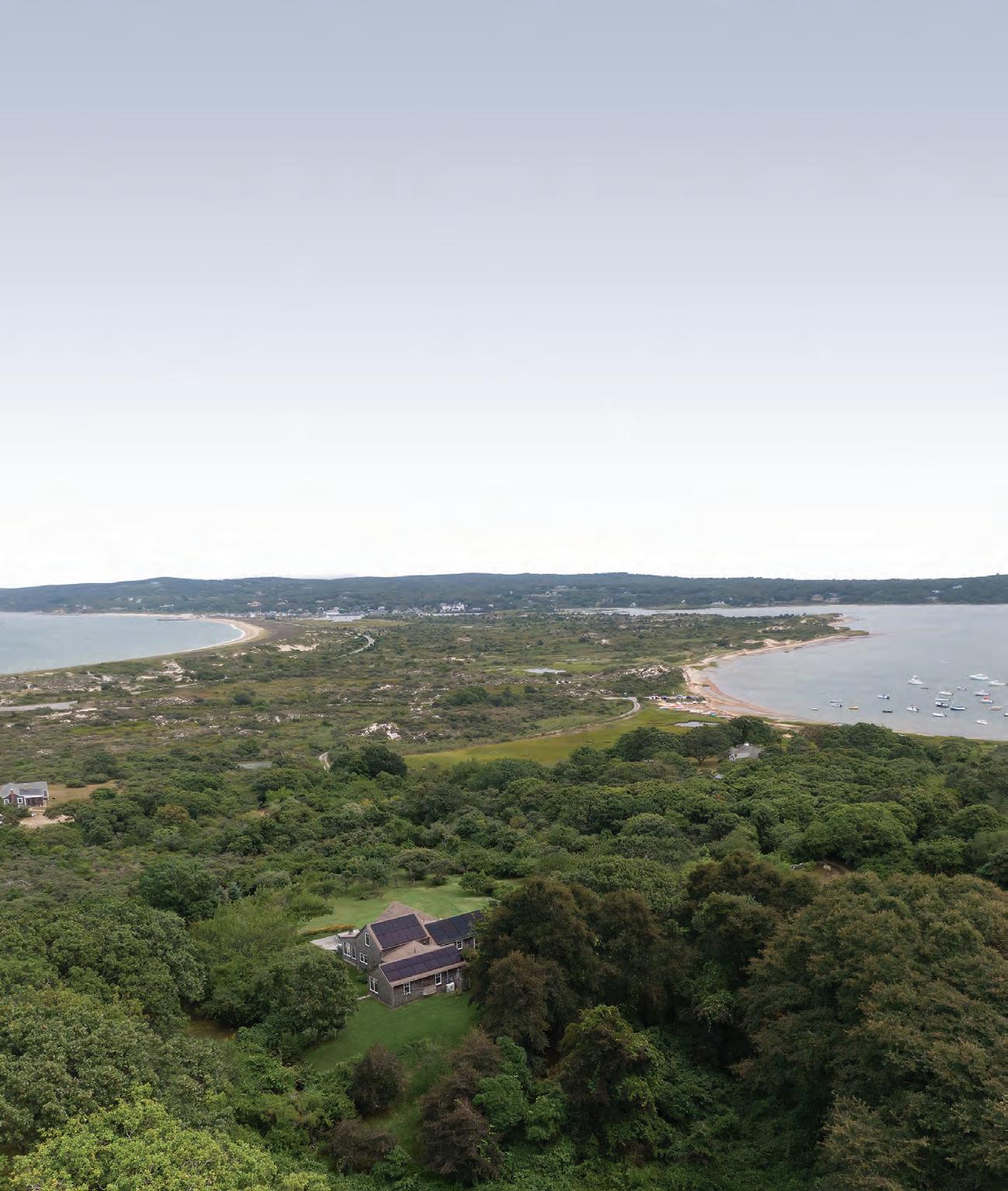
We have four clients: you, your neighborhood, the island, the planet






We have four clients: you, your neighborhood, the island, the planet
As the first B Corporation Certified bank in Massachusetts, we are excited to be a pioneer for banking as a force for positive change. With B Corp Certification, we are extending our commitment to people and community.
Join us today.
We empower our CUSTOMERS to achieve their financial dreams
We reward our EMPLOYEES and encourage their growth and wellbeing
We strengthen our COMMUNITIES with giving that makes an impact
We provide transparency in GOVERNANCE that acknowledges all stakeholders
We protect our ENVIRONMENT and work to create a more sustainable future
mvbank.com
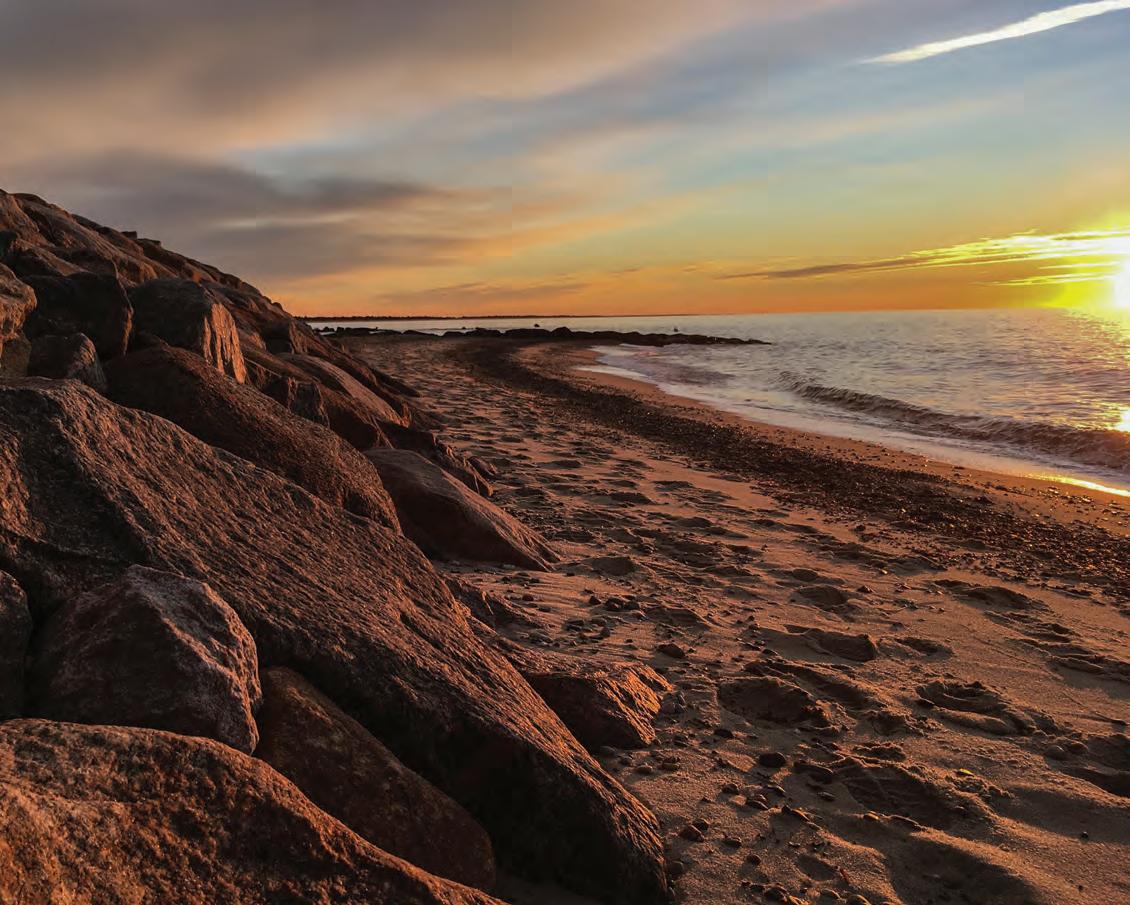
President
CEO Raymond Pearce
Editor Jamie Kageleiry, editor@bluedotliving.com
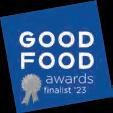
Senior Writer Leslie Garrett
Associate Editor Lucas Thors
Copyeditor Laura Roosevelt
Creative Director Tara Kenny
Design/Production Whitney Multari
Digital Projects Manager Kelsey Perrett
Social Media/Digital Projects Julia Cooper
Contributing Editors Mollie Doyle, Catherine Walthers
Ad Sales Josh Katz, adsales@bluedotliiving.com
Bluedot and Bluedot Living logos and wordmarks are trademarks of Bluedot, Inc. Copyright © 2023. All rights reserved.
Bluedot Living: At Home on Earth is printed on FSC paper, using soy-based ink, in the U.S.
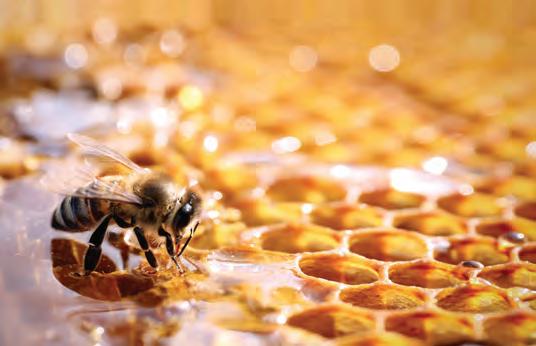
Bluedot Living magazine is published quarterly and is available at newsstands, select retail locations, inns, hotels, and bookstores, free of charge. Please write us if you’d like to stock Bluedot Living at your business.
Editor@bluedotliving.com
Sign up for the Martha’s Vineyard Bluedot Living newsletter here, along with any of our others: the BuyBetter Marketplace, our national ‘Hub” newsletter, and our soon-to-be-launched Bluedot Kitchen newsletter: marthasvineyard.bluedotliving.com/ sign-up-for-our-newsletters/
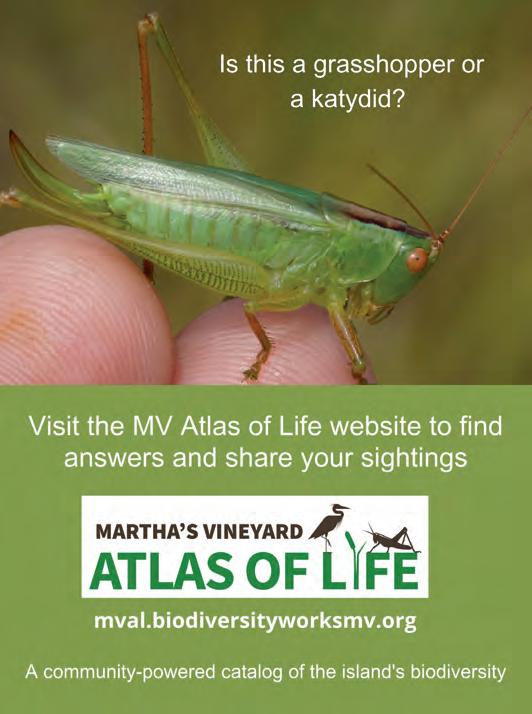
Subscribe! Get Bluedot Living Martha’s Vineyard and our upcoming Bluedot GreenGuide mailed to your address. It’s $24.95 a year for all four issues plus our Green Guide, and as a bonus, we’ll email you a collection of Bluedot Kitchen recipes. Subscribe at bit.ly/MVBluedotSubs
Read stories from this magazine and more at marthasvineyard.bluedotliving.com
Find Bluedot Living on Twitter, Instagram, Facebook, and YouTube @bluedotliving

Our founder, Victoria Riskin, told me that several years ago she started to notice that when people discussed climate issues, they inevitably ended with: I just want to know what I can do every day, in my own home.
She launched Bluedot Living to do just this: inspire people to make changes in their kitchens, their gardens, their communities, by sharing stories of people around them doing just that.
While we love sharing stories, we also thought you might like a resource guide that pulled together all the “How-to’s” that
could help you live more lightly on our Island and our planet.
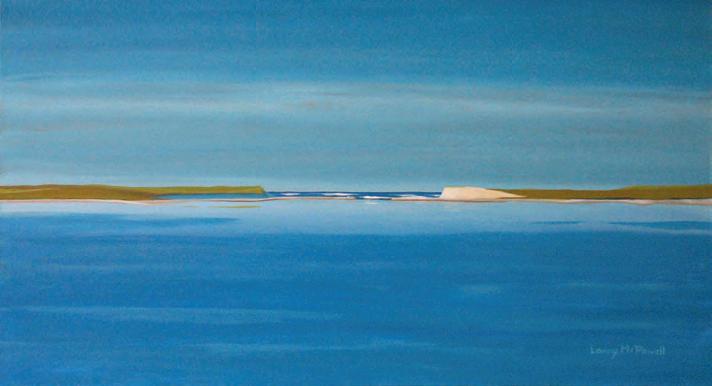
We were thrilled when Tea Lane Associates stepped up to sponsor this publication. They have supported us since our first issue of Bluedot Living more than two years ago, and made this resource guide a reality. Thank you, Tea Lane Associates!
Alongside tips and advice, you’ll find Field Notes from many of our Island environmental and conservation organizations that will help you figure out what fish to eat, what to plant, how to prepare your rental property for a greener experience for tenants, how to be a citizen
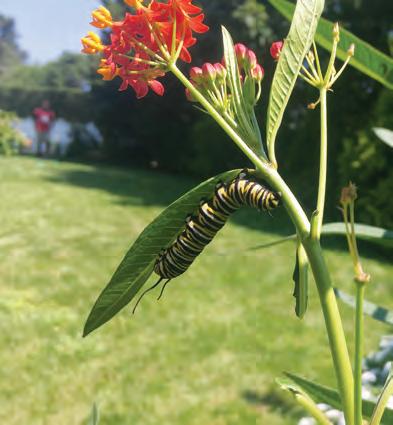
scientist, the top nine things you can do to live more sustainably, and guides on how and where to recycle and compost, banish plastic from your pantry, and maintain radical hope. We hope you’ll hang on to this guide and turn to it often.
If you like having this practical guide, you'll love our biweekly Bluedot Martha's Vineyard newsletter, where we share Climate Quick Tips, Dear Dot advice, Earth-friendly recipes, and stories about Islanders doing right by the planet. Sign up here: bit.ly/MV-NEWSLETTER
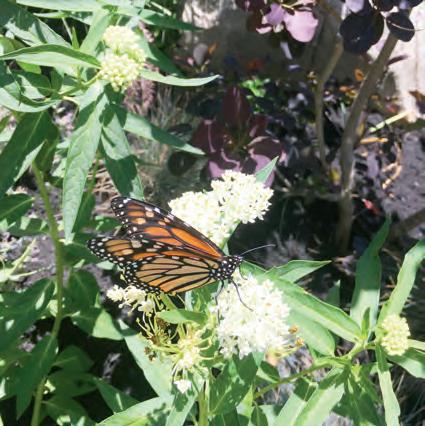
You can also sign up there for our Daily Dot newsletter.
We’ll be publishing a Green Guide annually, and welcome suggestions on what we should include in next year’s edition. Please write me at editor@ bluedotliving.com.

Thanks, as always, for your company on this journey to creating a greener life on this small blue dot we call home.
—Jamie Kageleiry5
47
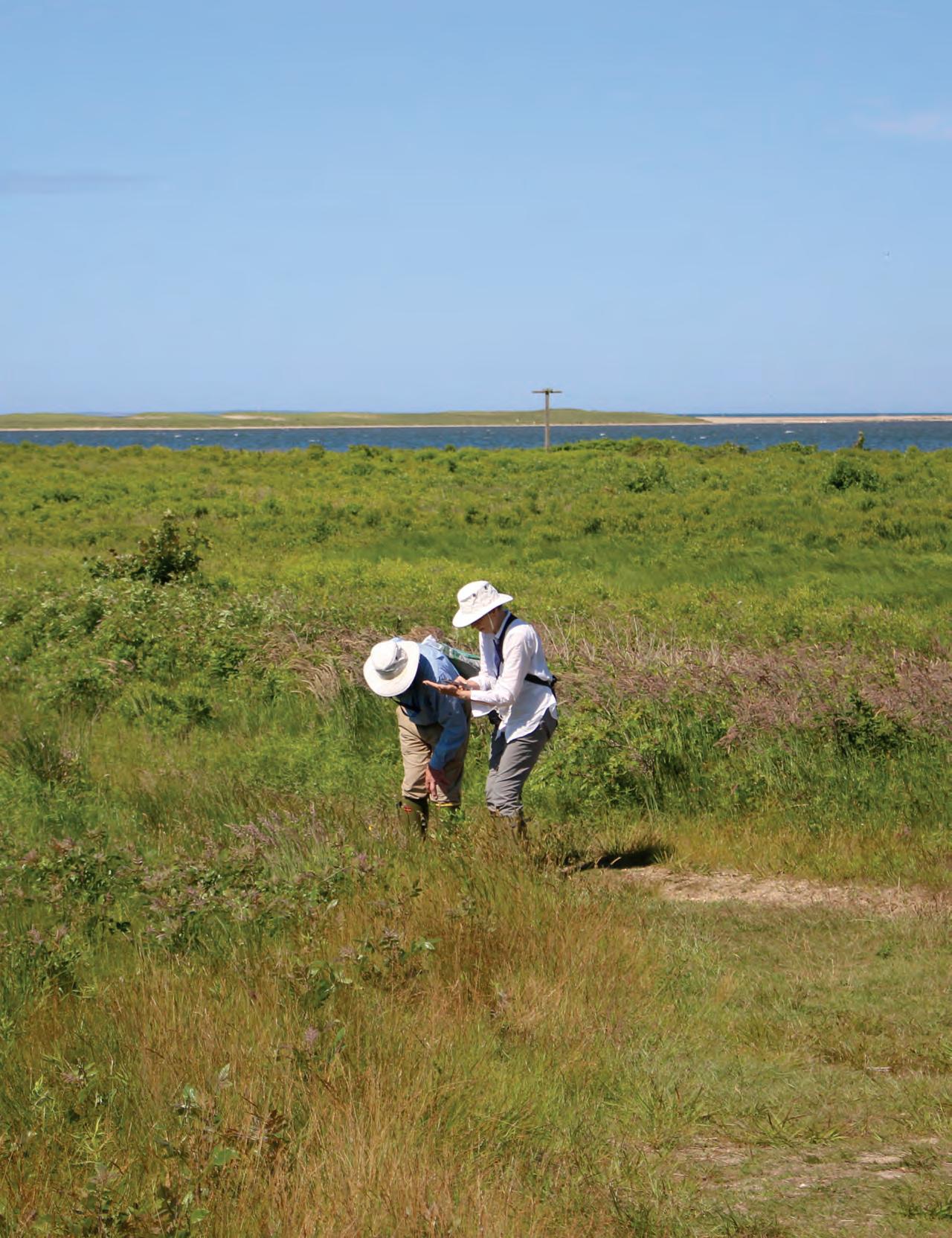
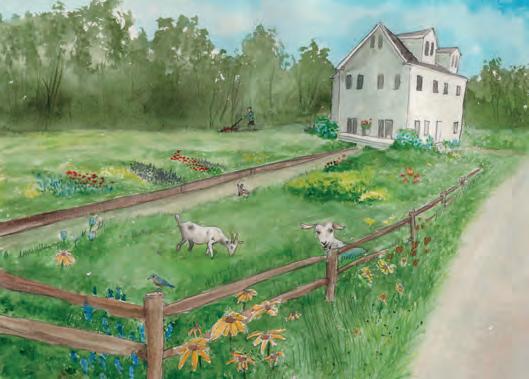





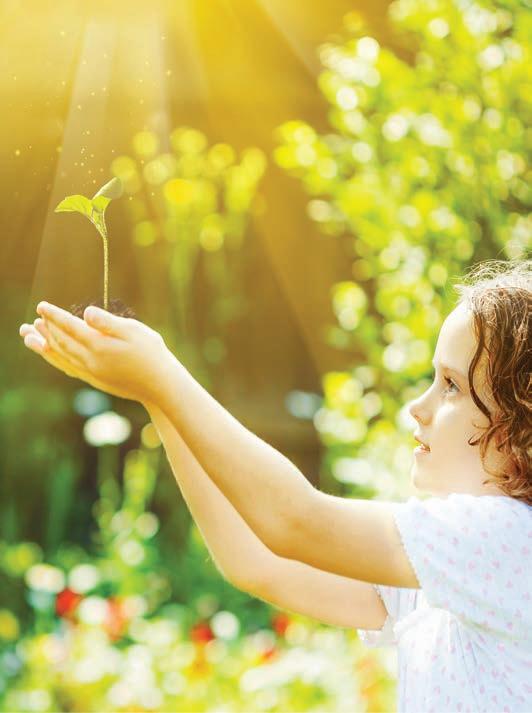
Recycle, compost, volunteer, write your rep, buy secondhand.
See this online at bit.ly/MV-HANDBOOK. See our How to Get Rid of Anything Guide at: bit.ly/GET-RID
At the West Tisbury Library, patrons can check out games, activities, audiovisual equipment, musical instruments, tools, and much more. Visit bit.ly/WTLIB-THINGS for a full list of items. Look for updates on other Island library "things."
A collaborative project of the West Tisbury Library, Island Grown Schools, Polly Hill Arboretum, Whippoorwill Farm, and local home gardeners, the Seed Library brings the knowledge of how to save seeds back to our island community while creating a central space where seeds can be freely shared. For more info on events, follow the @mvseedlibrary Facebook page.
Starting in June, volunteers are welcome to work with staff at the 70-acre West Tisbury public garden on activities like planting, pruning, weeding, and mulching. Contact Ian Jochems for more information at ian@pollyhillarboretum.org.
Island Grown Initiative works to build a regenerative and equitable food system on Martha’s Vineyard. Volunteers can help IGI harvest fresh local produce for Islanders in need. No experience needed. Gleaning takes about two hours and volunteers may keep a share of the harvest for themselves. To sign up, go to igimvg.org/volunteer.php.
Great Pond FoundationTHE GREAT POND FOUNDATION focuses on enhancing the health of the Edgartown Great Pond. Volunteers are encouraged to assist with their Ecosystem Monitoring Program and educational
outreach events, aiding in water quality and biodiversity data collection, conducting surveys of pond species, helping staff with demonstrations of scientific concepts, and assisting with science communication. For updates on volunteer opportunities, email science@greatpondfoundation.org.
COMMUNITY GREENHOUSE OF MARTHA’S VINEYARD
People come to the Community Greenhouse of MV in Oak Bluffs to gather and grow food and plants and learn together. There are a range of yearround volunteer opportunities for all mobilities and levels of expertise. Volunteers can work inside and outside to help with weeding, pruning, seeding, planting, and beautifying plants; members can also pick fresh produce. For updated information, visit marthasvineyardgreenhouse.org/
ACT TWO SECOND HAND STORE
66 Main St., Vineyard Haven; acttwosecondhandstore.org
CHICKEN ALLEY THRIFT SHOP
38 Lagoon Pond Rd., Vineyard Haven; chickenalley.org
ISLAND VINTAGE & DESIGNER APPAREL
30 Main St. (entrance on Spring)
Vineyard Haven
shopislandvintage.com
SECOND TREASURES MV
8 Uncas Ave., Oak Bluffs secondtreasuresmv.com
THE 'DUMPTIQUE'
West Tisbury Transfer Station
Want something else included?
Email us at editor@bluedotliving.com
All six towns have the same rules for what can and can’t be recycled.
RULES: Empty, clean, wash; no caps or lids
• Metal cans
• Plastic containers (bottles, jars, jugs, and tubs)
• Glass containers (bottles and jars; NO ceramics OR window panes)
• Paper and paperboard, corrugated cardboard (empty and flatten, remove packing tape) Includes office paper, junk mail, newspapers, magazines, paperboard boxes; NO shredded paper, pizza boxes, waxed boxes, or books with bindings)
• Recyclables in a garbage bag
• Garbage
• Plastic bags or plastic wrap
• Food or liquid
• Styrofoam items or packaging materials
• Clothing or linens
• Tanglers (hoses, wires, chains, electronics)
Aquinnah, Chilmark, Edgartown, West Tisbury

Dual sorting system:
• Cardboard and paper go together
• Plastic containers, tin cans, aluminum cans/glass go together
Oak Bluffs and Tisbury
Dual sorting system:
• Cardboard, newspaper and paper go together
• Everything else single stream
Oak Bluffs Bruno’s Drop-off Dual sorting system
• Separate cardboard
• Everything else single stream Bruno’s and ABC’s Pick-up Recycling Rules
• Single bin, don’t need to separate materials
Compost buckets available for free at IGI’s offices in West Tisbury or at town transfer stations. To request a bucket, email office@igimv.org or call 508-687-9062.
Drop-off locations (currently free or for small fee)
• Transfer stations in all towns
• Chappy ferry dock
• IGI’s farm
• Eggshells and coffee grounds to North Tabor and Wise Owl Farms
• All meat and fish (including bones, lobster shells, and egg shells)
• All dairy
• Grains, nuts, seeds, flour products
• Fruits and vegetables
• Tea bags (staples removed)
• Coffee grounds and coffee filters
• All flowers
• Paper napkins and paper towels (unless they were used with toxic products that won’t break down under high heat)
• Large amounts of oyster, clam, littleneck, mussel shells
— Contact the M.V. Shellfish Group: mvshellfishgroup.org)
Combat food insecurity and food waste by ensuring that any unwanted non-perishable food is donated rather than tossed. Visit their sites or call for details and hours.
See IGI's wishlist of items or drop off at 137 Vineyard Ave., Oak Bluffs.
FOOD PANTRY
55 School St, Oak Bluffs.
EDGARTOWN COUNCIL ON AGING FOOD PANTRY
10 Daggett Ave, Edgartown.
Got something to say about pending legislation? Call your elected officials:
State Governor
Governor Maura Healey: 617-725-4005; Twitter: @MassGovernor
State Senator
Julian Andre Cyr: 617-722-1570; Julian.Cyr@masenate.gov; Twitter: @JulianCyr;
State Representative
Dylan A. Fernandes: 617-722-2013; dylan.fernandes@mahouse.gov; Twitter: @RepDylan.
Federal Senator
Ed Markey: 617-565-8519;
Twitter: @EdMarkeySenator
Elizabeth Warren: 617-565-3170;
Twitter: @SenWarren
Representative William R. Keating: 508-771-6868;
Twitter: USRepKeating
To : Bluedot Living
From: From the folks at IGI and the Island Climate Action Network Subject: Climate Change — The Top Nine Things You Can Do to Help.
Compost! If you don't compost at home, bring your food scraps (including meat, bones, dairy, lobster shells, any food scraps) to your local town transfer station. Bruno's will pick it up and bring it to the Island Grown Farm to be turned into compost, or you can bring it to the IGI farm yourself at 80 Stoney Hill Road, down the drive from Island Alpaca. More information can be found on the IGI website here: igimv.org
Support local farmers by buying local food. Head to the West Tisbury Farmers Market on Wednesday and Saturday mornings, or visit one of the Island's many farm stanads. Check out the Island Farm Map here: marthasvineyardagriculturalsociety.org/ local-farms
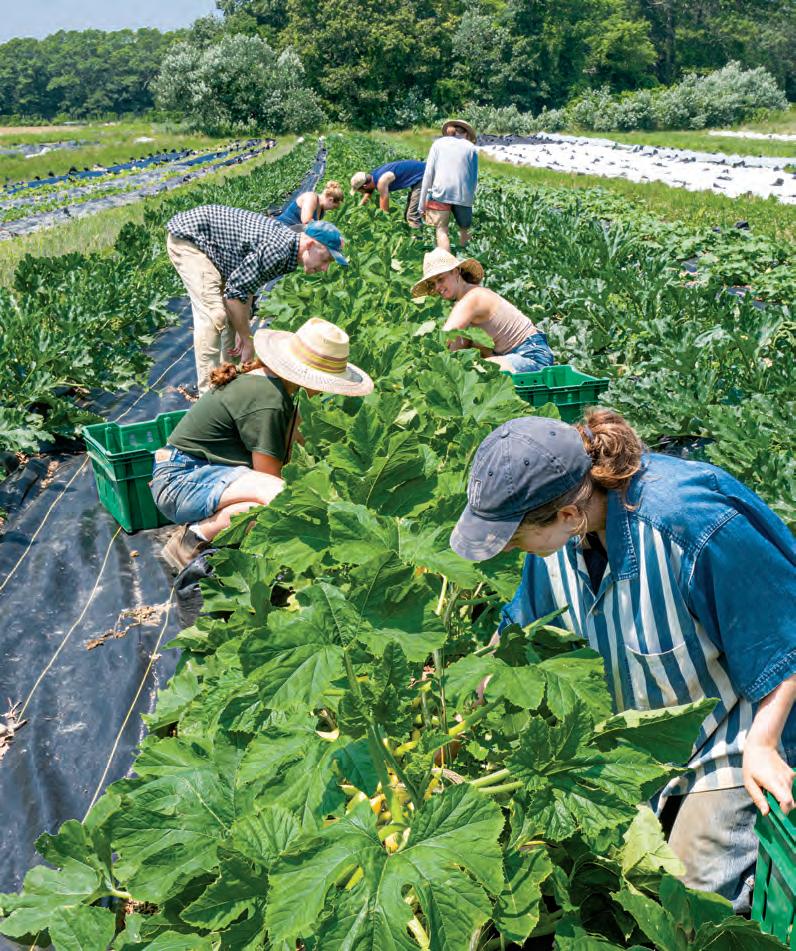
3
Grow food at home. This can be in a sunny window, in pots on a porch, in a vegetable
garden, or via fruit trees in your yard. See regenerative backyard gardening resources on the IGI website here: igimv.org/backyard-growers
4 5 6 7 8 9
Reduce your lawn footprint, and plant edibles and/or native plants instead. This can reduce usage of water, fertilizers, and fossil fuels required for mowing. Check out Biodiversity Works' Natural Neighbors program (biodiversityworksmv.org/programsprojects/natural-neighbors/), and/or the lawn footprint reduction tips from Garden Wisdom's Roxanne Kapitan on the IGI website, here: igimv.org/ backyard-growers
Get a free home energy audit through Cape Light Compact to find ways to save money and energy in your home. (capelightcompact.org)
Reach out to an energy coach at Vineyard Power (Vineyardpower.com) if you need (free!) advice on improving energy efficiency in your home, getting a heat pump, buying or leasing an electric vehicle, installing solar panels, and more.
Get an energy efficient heat pump for heating and cooling! Check out rebates, incentives, and loans available through the MassSave program and Cape Light Compact.
Adjust your thermostat (up in the summer and down in the winter) to use as little energy as possible for heating and cooling your home, especially if you're going to be away from home for a period of time.
Become a member of Island Eats (islandeatsmv.com) to access reusable stainless steel takeout containers at many local restaurants, rather than using single-use packaging.
Icannot offer you a dictionary definition of psychogeology because the word is not in the dictionary. What I can do is tell you that the author who coined the term, Kim Stanley Robinson, wanted a word to define how we are shaped by the places where we live or have spent time. Psycho, as a prefix, refers to relating to the mind or the soul. Geology, broadly, means the substance of the earth.
Robinson chose to use the term “geology” and refers specifically to mountains. The Sierra mountains (the focus of his most recent book, The High Sierra, a Love Story) make him feel differently than Swiss mountains, he says, inviting us, too, to notice how different places make us feel.
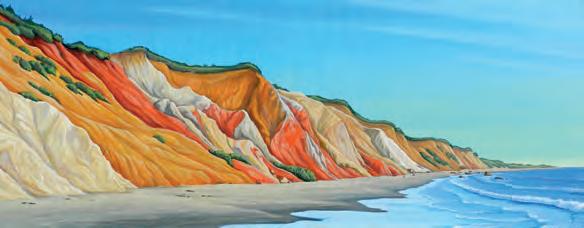
“I think the mountains are a space where you are taken outside of your ordinary urban mind and are thinking a little deeper — or, no, that might not be the right way to put it,” he said during an interview on The Ezra Klein Show. “Things are coming together in your head in a different way.”

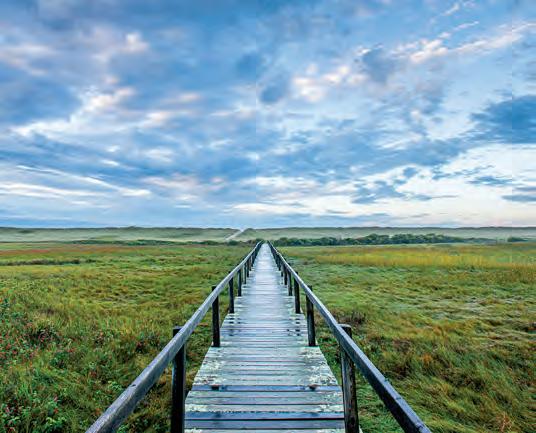
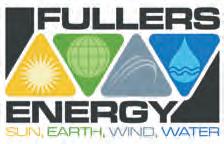
Richard Powers, author of Bewilderment and The Overstory, described his first foray into the Smoky Mountains to Ezra Klein in a separate interview. The experience was so transformative for Powers that he found himself still thinking about it a year later. “If you’re still preoccupied with a place and how you felt in that place after such a long period of time after only a four-day exposure,” Powers said, “that’s got to tell you something.”
There is a particularity to psychogeology, according to Kim Stanley Robinson: “I talk about psychogeology as the trying to understand why, for instance, the Sierras feel so different than the Swiss Alps or the trans-Antarctics or the Himalayas.” It is the character of these places, he posits to Klein, that coalesce into a particular feeling. … You can try to explain it, but it’s more of a gestalt. And that’s psychogeology.”
Leslie Garrett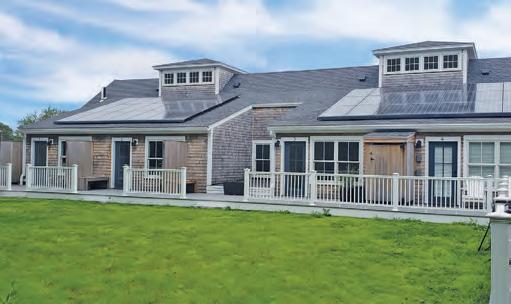
This interview has been edited and condensed for clarity.
Could you briefly introduce yourselves?
Liz Durkee: I’m the Climate Change Planner at the Martha’s Vineyard Commission.

Meghan Gombos: I am an independent consultant. I’ve been working in marine resource management and climate change adaptation for 20-plus years.
Cheryl Doble: My background is in landscape architecture and planning. Like Liz and Meghan, I was also on those early committees that started up the Climate Task Force and the Climate Resilience group.
Before we get to the action plan, we should ask: how will climate change affect Martha’s Vineyard?
Durkee: Because we’re an Island, sea level rise, stronger storms, and all the coastal issues are extremely important for us to address. Climate change is going to impact every aspect of our lives: our land and water, our human health, our economy, our emergency preparedness. We need to become more energy resilient and decrease our greenhouse gas emissions. It’s all interrelated, and we need to look at the whole big picture if we’re going to address these issues in a smart way.
Gombos: In addition to increased storms and sea level rise, sea surface temperature increases and ocean acidification are going to have huge impacts to our marine environment. Our marine ecosystems, our fisheries, shell fisheries — things that are really important to the Island community in both livelihoods and quality of life. And also just the heat of increased temperatures.
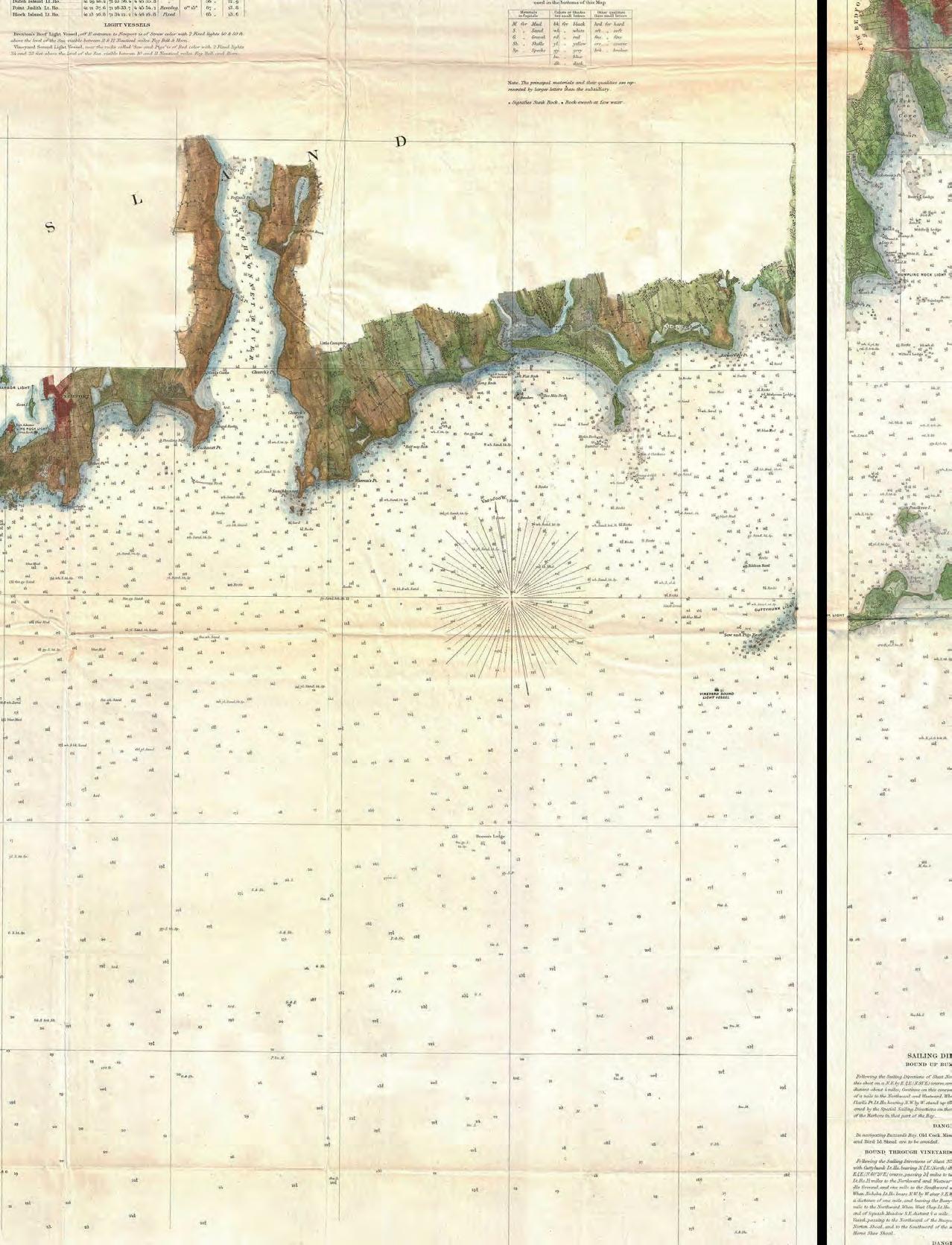
We have so many people who work outside, who recreate outside.
Durkee: Heat is going to affect our human health; it’s going to increase respiratory issues and vector-borne diseases, and mental health issues — like if we have a major hurricane and people are displaced. We’ll have increased rain, and drought. It goes both ways. So, it’s not like you can handle one thing first, and then handle another. There’s a relationship here that you have to understand. We have to look forward in a way that addresses that. We have to come to grips with how we help each other in a moment of real extreme challenge, and then how we’re going to respond afterwards, because it’s very difficult to come up with ideas in the middle of a disaster.
Gombos: The Climate Action Plan is basically looking at all of these issues and looking forward to 2040, and maybe even further. What are the impacts going to be to the Island? And what do we want to do to build? What do we want to do now to build our social, ecological, and environmental resilience to those changes?
Durkee: In 2022, we received funding from the Mass Municipal Vulnerability Preparedness Program, so this is actually phase two of the Climate Action Plan. Phase one was more foundational, doing background research and the adaptation reports that Meghan prepared.
Gombos: We’re trying to achieve a plan that has a 2040 outlook, and then has

more immediate and measurable actions that we want to take in the next ten years. So, between now and 2030, what are we going to do? We can’t do everything. What are the biggest things to tackle? Where will we get the most bang for our buck? We’ve put together six working groups around six thematic areas: food security, transportation and infrastructure, economic resilience, land use, natural resources and biodiversity, energy transformation, and public health and safety.
Durkee: Collaboration is a huge piece of this, and the pond associations and the shellfish group, the insurance companies, the nonprofits, conservation groups, food security, and public health groups are all going to play a role in the implementation. It’s going to be an Island-wide plan.
Doble: My hope from this process is that it builds our capacity to collaborate in new ways. I feel that we’re not starting dead in the water. We really have so much going on, which gives me hope that we can do so much more.
Gombos: Like Cheryl said, there’s so much good work that’s happening. It’s just getting folks to be able to pause and sit down and talk and share what’s happening and then say, ‘Hey, what if we could combine these efforts?’
Gombos: For each of the working groups, we have a liaison who’s a community leader in that space. They’ve got expertise, they’ve got the relationships, and we’ve asked them to help pull together a variety of people from around the community that can guide that component of the plan. We’ve asked the towns to provide a representative to each working group. And then we have businesses,
NGOs, and students we’ve asked to participate.
Doble: When this process began, the Commission went to each of the towns and asked them to form a Climate Committee to work with them on this project. The Wampanoag also have representation, and the Brazilian community as well.
Can you give a few examples of actions that might come out of the plan?
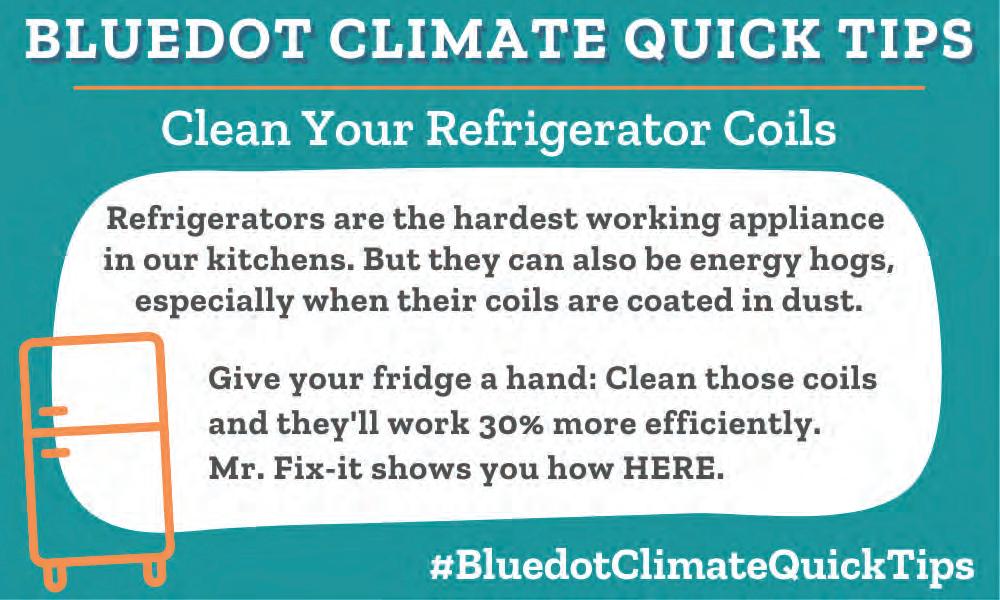
Durkee: The residents of Aquinnah got together and organized a Community Emergency Response Team [a disaster response initiative based on FEMA guidelines], and they had their emergency manager train residents in emergency response, first aid, and things like that. It’s an amazing program, and we really would like to see all the towns develop a CERT team. On a policy note, another example is that we're really hoping the planning boards and all the towns will update their floodplain bylaws to address flooding.
Gombos: Transportation and infrastructure. When we’re upgrading roads and culverts, let’s do it in a way that’s thinking about what the climate projections are, so we are not setting ourselves up to have to redo something.
If we’re talking about the next 20 years or so, what are the resources that the Island has, and what does it need?
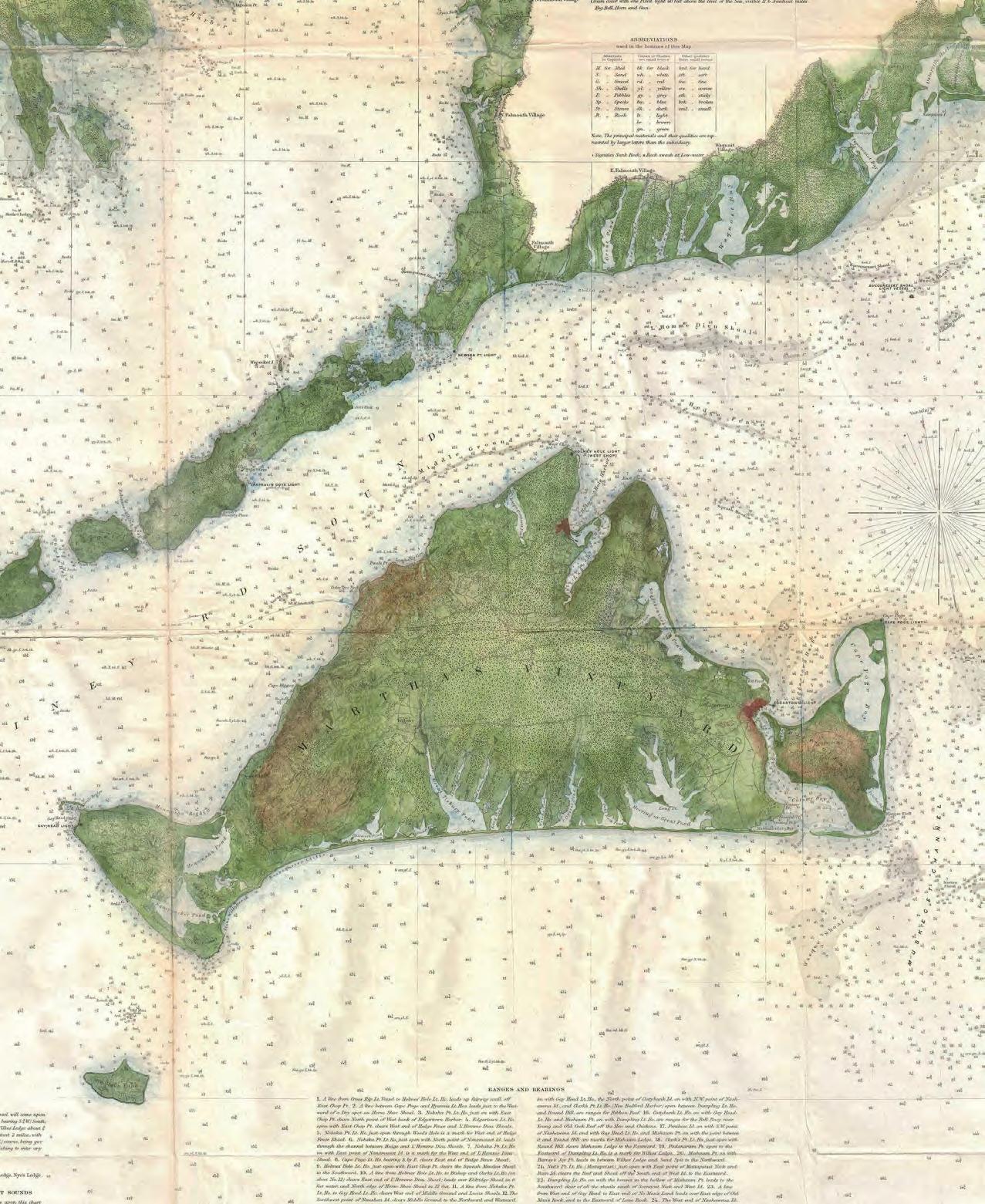
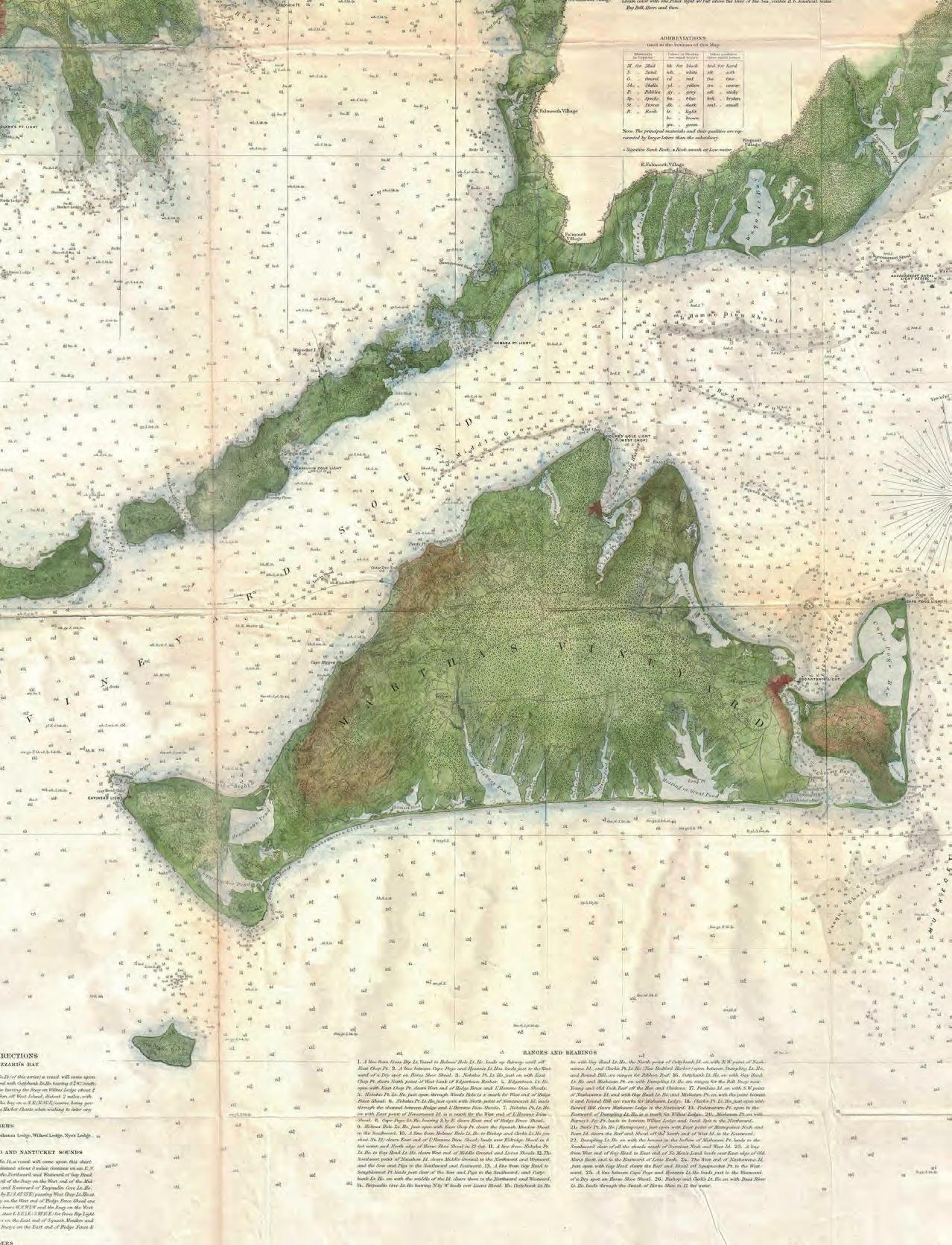
Durkee: As we have said, there are a lot of organizations and individuals working on a lot of these issues now. On the other hand, it’s going to cost money to do all these things. We need to look at ways to come up with very large amounts of money. There are other things to think about. Does the commission need more climate change staff? Do the towns need to have a staff member who is focusing on climate issues for their towns? Are nonprofits going to need to add staff members if they’re going to be ramping up what they’re doing?
Doble: I’m not going to be around to see the end of this plan happen. It’s a long-term process. One of the things I’m starting, as
I’ve worked on projects here, is we begin by taking our first steps. And we make good investments now. And the second is that, this can be phased.
Gombos: I totally agree. Even though we have a twenty-year horizon for this plan, the meat is really in the next five to ten years. With the infrastructure bill, there are opportunities there. I think there is going to be more funding available as we go forward. The more we’re in a place to say, ‘This is what we want to do,’ the better off we are.
Durkee: We’ve developed a Climate Action Fund, through the Martha’s Vineyard Community Foundation, that people can donate funding to [marthasvineyardcf. org]. If we get a grant where the locals have to match the grant funds, this fund could help us to pay for that town’s portion of the grant.
Doble: That program is important because it makes us a little bit more nimble than when you have to go through town government and county meetings to get allocation for grant funding.
What is the difference between mitigation and adaptation on Martha’s Vineyard?
Durkee: It’s harder for people to grasp the adaptation. Mitigation, yeah, you could buy an electric car, put solar panels on your
house. One of the things that we need to start dialogue on, in terms of adaptation, is managed retreat from the shore. It’s a reality. People don't really like change on this Island, and things are going to change. We’re working to change them in the best possible way we can, but there are going to be tough decisions to make in some areas.
What are some short- and long-term goals for some of these projects?
Gombos: There are certain issues like moving roads away from the shoreline, where it’s long term and it’s going to take a while to do that. But then there are other things that people can do in their own backyard, like gardening or building habitat. Those are smaller actions where you see progress immediately while we’re working on the big clunkers that take a while to happen.
Durkee: Sometimes people don’t recognize that things are happening because they’re moving slow. Yeah, it doesn’t look like anything’s happening, but it is happening. I think that’s so important. Because it’s discouraging when you put time into a plan, and then you don’t see things happen. And with communities, with government, with the groups that we’re working with, this is all going to take time.
To follow the Climate Action Plan, visit thevineyardway.org
For lots of us, talk of electric vehicles typically defaults to cars or SUVs. And yet, though there is undoubtedly an EV revolution at hand, it is being driven predominantly by smaller vehicles — e-bikes and scooters, for instance.
There’s a name for this mode of transport: micromobility.
Horace Dediu, a tech analyst, coined the term and, literally, wrote the book on it. Micromobility refers to any vehicle less than about 1100 pounds, usually electric. But on a Harvard Business Review (HBR) podcast, Dediu noted that he’s expanded that “to define micromobility as very efficient mobility in terms of the energy consumed.”
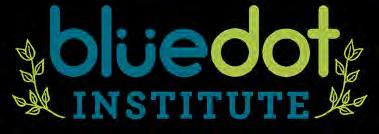
Dediu posits that micromobility is poised to transform our cities, a prediction that’s already evident. Sales are booming in the EU and Asia and growing. According to Bloomberg, “To accommodate the now-ubiquitous

presence of what has come to be known as micromobility, Tel Aviv intends to more than double its bike paths to cover 350 kilometers by 2025 in the 52-square-kilometer city. It’s part of Mayor Ron Huldai’s ultimate dream — to eventually create a
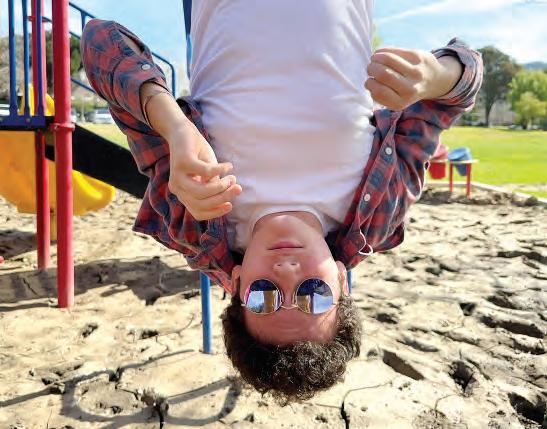

car-free, pollution-free metropolis.”
Colin Mckerracher, head of transport and automotive analysis at BloombergNEF recently put it this way: “the EV revolution … rides on two wheels for now.”
In North America, however, large vehicles still dominate our streets — in 2020, pickup trucks made up five of the top ten bestselling vehicles in the U.S. And yet, Dediu tells us that 80% of trips by car are less than two miles long. And the majority of those vehicles hold just one passenger.
Our infrastructure — our very expensive infrastructure — is built to accommodate vehicles. Infrastructure built for micromobility, Dediu has said, is considerably cheaper. “All arguments being made against micromobility is that, ‘Well, we have the infrastructure for automobility. We’re going to carry on doing this.’ As everyone knows … you’re just pointing to the fact that it was done wrong.”
–Leslie Garrett

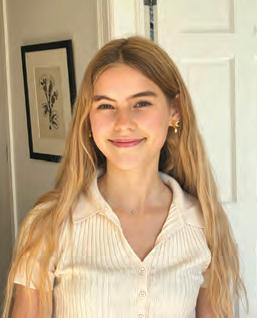
Go solar, or visit capelightcompact. org/clcgreen to be sure you are using clean, sustainable energy to power your needs
Save yourself money on maintenance, and cut out a big user of fossil fuels. Go to normalnow.com or drivegreen.greenenergyconsumers.org to find out what’s available.
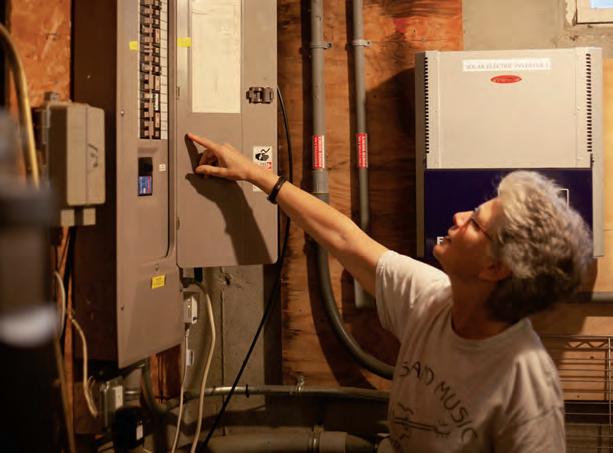
Go with a cold-climate air source heat pump, and lessen your operating costs. Go to masssave.com and bit.ly/go-clean to learn more. Exchange your hot-water system for a hybrid electric water heater, enhancing summer dehumidification, and saving on your energy bills. bit. ly/go-clean
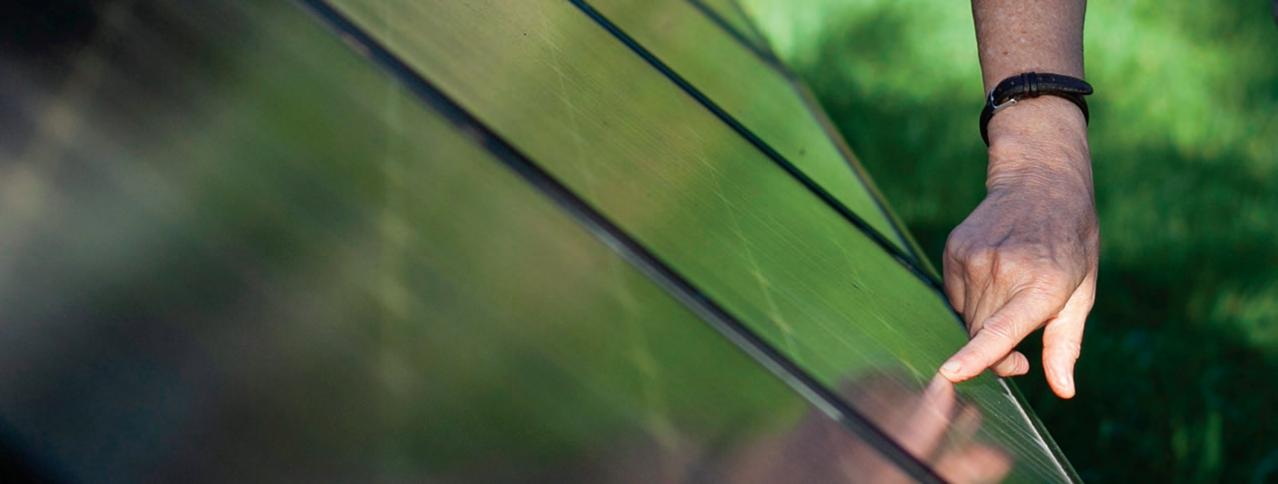
Learn the basics at this Island Climate Action Network link: bit.ly/ican-solar. Contact David Smith at dbssolarconsulting@hotmail.com to learn about many Vineyard solar installers.
Use a water bottle. Make a pledge to not buy single-use beverages that are in plastic containers.
To reduce plastic in your pantry, check out Mollie Doyle’s story on page 17. Make your own yogurt, so as to not buy plastic containers of yogurt each week.
Try a shampoo bar. Warner loves
the rosemary lavender one from chagrinvalleysoap.com.
Get metal tiffins for your kid’s lunch. The Charter School has switched to these for all the food they serve.
Learn more at theworldcounts. com. When it comes to carbon dioxide emissions per passenger per distance, flying is second to none. Only do it when absolutely necessary.
They encourage mindless consumption and a throwaway culture. Use our libraries, Dumptique, and Chicken Alley to find the things you need. Or ask friends if you can borrow an item, instead of buying one for yourself.
Read about the companies you are investing in, and don't support any fossil fuel exploration, extraction, or combustion.
What are we doing to reduce our energy consumption by 2030? If your answer is “Um …,” let Kate Warner be your guide.PHOTOS BY SAM MOORE
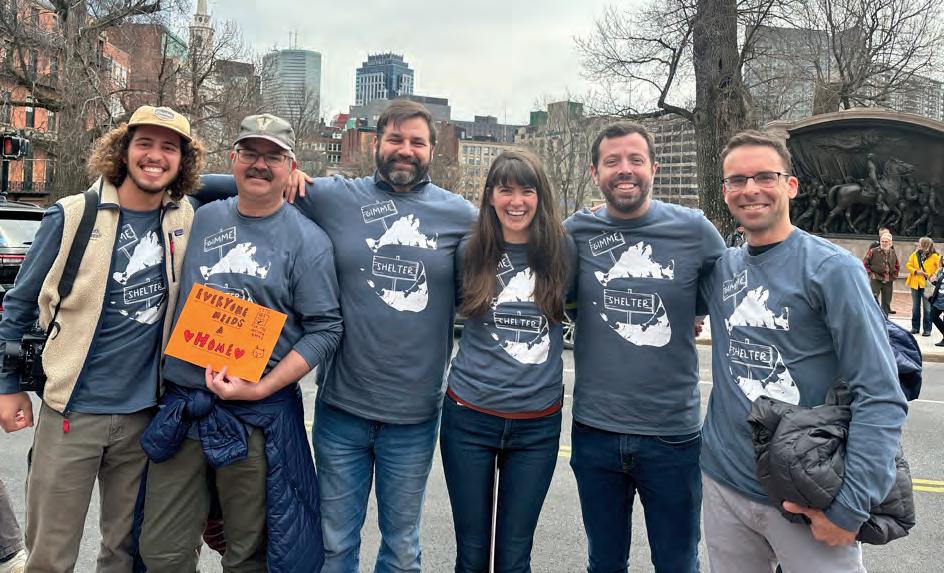
One of two MV ‘B Corps’ using business as a force for good.
South Mountain Company is an Island integrated design, engineering, and building firm that has been dedicated to environmentally and socially responsible practices for decades. Bluedot Living heard from Deirdre Bohan, CEO and co-owner of South Mountain Co., about some of the organization’s core values, the process of becoming a B Corp, and Bohan’s hopes for the future of Martha’s Vineyard. See the longer interview online at marthasvineyard.bluedotliving.com
Interview by Lucas ThorsBluedot Living: How did you first hear about B Corp certification?
Deirdre Bohan: B Corp actually approached us in 2012! They were just starting out and looking for like-minded companies … our reputation preceded us! We wanted to support their movement as it's so closely aligned with our values, but honestly, we also kind of felt we were helping them by participating. That didn’t last long … Despite being the highestscoring company several times, we feel we get more value from the certification process telling us what we can do better than the accolades.
BDL: What did South Mountain have to do to meet the performance thresholds to be certified as a B Corp? What requirements did South Mountain already meet before embarking on the certification process?
DB: B Corp uses a rigorous assessment tool, which you can try out for free. When we did the preliminary assessment, we found our ethos was aligned with B Corp’s, and our robust set of internal operating policies gave us a good foundation to start from. With those in hand, our next steps were to collect and organize a bunch of other company and project data to submit.
BDL: Are there other B Corps, like South Mountain in Massachusetts, that are doing similar work?
DB: There are currently 6,000 B Corps in 80 countries, 113 are in Massachusetts, and two on Martha’s Vineyard. (Our friends at MV Bank qualified a couple of months ago!)
BDL: Could you describe some of South Mountain's core values that align with those of a B Corp? How about some specific projects that illustrate those values?
DB: The B Corp motto is “using business as a force for good.” We’ve been trying to do that for almost fifty years. In the mid-90s, people started calling it “triple bottom line” business — meaning people, planet, and profit carry equal weight in decision-making.
These days, B Corp separates that triple-bottom-line impact into five categories, with some examples of how we meet the criteria (for the full set of examples see this story online at marthasvineyard.bluedotliving.com)
South Mountain is a democratically-controlled worker-owned cooperative. After five years, employees are eligible to buy in and become an owner. As owners, they share in both the decisionmaking and the profits.
We…
• Seek to make every building net-zero capable (meaning it can produce as much energy as it consumes)
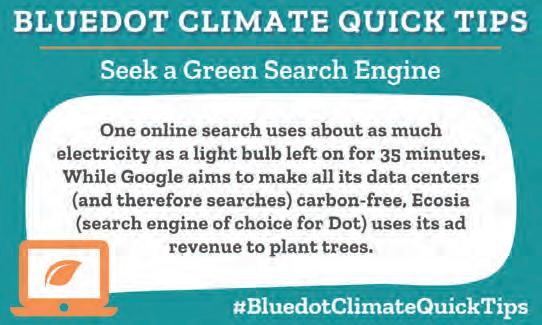
• Design with waste and carbon reduction in mind
• Spec materials with social, environmental, and health impact in mind
• Have a standalone solar division that’s transitioned nearly 600 Island buildings away from fossil fuels
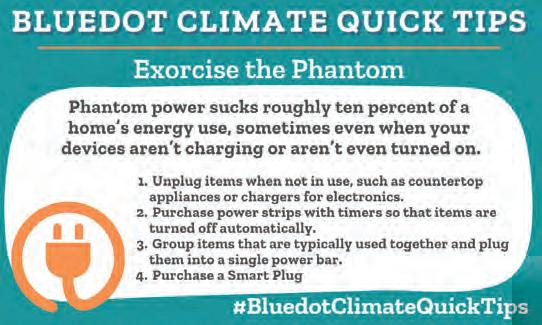
• Design permaculture into every project landscape
We strive to create an exemplary workplace dedicated to helping employees thrive both professionally and personally. We do this by providing:
• Living wages
• Professional development
• 100 percent payment of all family members’ dental and health care deductibles
• JEDI (Justice, Equity, Diversity and Inclusion) training
• Integrated process
• Connect them to the community
We …
• Allocate 20 percent of each year’s net profits to philanthropy
• Engage in pro-bono work
• Design and build affordable housing
• Advocate for Island issues that are important to us (MV Builders Association, Youth Workforce Development, MV Housing Bank), and compensate staff for board work
BDL: Can you speak personally to some of the social challenges the Island faces? How is South Mountain working to address the community's needs now and in the future?
DB: Housing and climate change loom largest (see our environmental commitments above)
Over time, SMCo has designed and built 43 affordable yearround homes, including three pocket neighborhoods. We have eight affordable housing opportunities in the pipeline right now — we’re building four units of workforce housing at IGI and developing four lots in West Tisbury. One of our employees is on the Steering Committee of the Coalition to Create the MV Housing Bank (CCMVHB). We provide strategic support wherever possible (at both the local and state level)
DB: We’d love to see more Island B Corps
BECOMING A B CORP WILL:
• Communicate your values
• Position you and your company as a leader
• Attract talent (It is a big draw for job candidates and has tremendous value with the younger Millennial and Gen Z demographic)
• Provide a new marketing lens
• Incrementally improve your practices
• Make you part of a movement!
OF FOOD PROCESSED ANNUALLY BY THE COMPOSTER AT ISLAND GROWN INITIATIVE'S FARM 1
360 T O N S $
Cost to Vineyard towns to transport and dispose of wasted food in 2020: 720,000 2
NINETY FIVE percent of Americans eat turkey at Thanksgiving
Approximate number of Vineyard turkeys: 1,000
Number of Americans at Thanksgiving who will eat the classic six-ingredient green bean casserole created 60 years ago by Dorcas Reilly in Campbell’s test kitchen: 20 million 5
40 cents of every dollar spent on food in 1975 that went back to the farm it came from ¢ 40 14.6
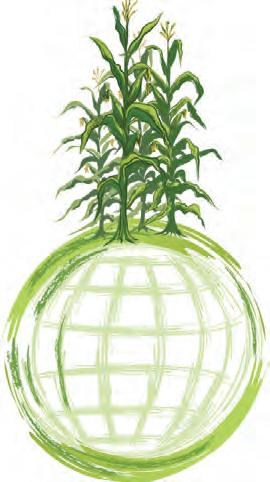
U.S. households that were food-insecure in 2020
10.5%
6,500 TONS 10
OF FOOD ARE SHIPPED OFF-ISLAND AS GARBAGE EACH YEAR
300 percent
14.6 cents of every dollar spent on food in 2018 that goes back to the farm it came from
OVER 15 YEARS
APPROXIMATELY
% 40 OF FOOD EACH YEAR IN THE US THAT GOES UNEATEN
“What we’re eating is never anything more or less than the body of the world.”
– Michael Pollan, The Omnivore’s Dilemma: A Natural History of Four MealsSOURCES: 1-2 ISLAND GROWN INITIATIVE, igimv.org/foodwaste; 3. REPUBLIC WORLD, bit.ly/turkeynumber; 4. VINEYARD GAZETTE, vineyardgazette.com/news/2018/11/21/turkeys; 5. SMITHSONIAN, bit.ly/casseroleinventor; 6-7 UNIVERSITY OF MICHIGAN CENTER FOR SUSTAINABLE SYSTEMS, bit.ly/foodsystemfacts; 8. USDA ECONOMIC RESEARCH SERVICE, bit.ly/foodsecuritystatisics; 9. VEGAN NEWS, bit.ly/newvegans; 10. ISLAND GROWN INITIATIVE, igimv.org/foodwaste. 11: NATURAL RESOURCES DEFENSE COUNCIL, bit.ly/40percentwaste.
The rooms in our homes are ripe for change. The clothes in our closets, the products in our pantries, the bins in our basements. They might be made with less-than-planet-friendly materials, or come in packaging that will clog our landfills, and there just might be too, too, too much of everything. Where to start can feel overwhelming. Follow along as Mollie Doyle explores our shopping, living, and home habits, and leads us toward a healthier home — for both the people in it and the Earth it sits on.
That is what all of this is about: habits. Maybe we buy a brand because our mothers did. Maybe we buy something because we like the box. I am guilty of buying stuff out of habit or curiosity — not necessarily because I need it or am going to use it, which leads me to the first of my six simple rules:
According to the USDA, 40 percent of all food in the U.S. does not get eaten. Project Drawdown, one of the world’s leading sources for climate change solutions, compares this to 37 million cars’ worth of greenhouse gases. So this whole notion of stocking up does not serve us — in any sense of the word. As my family can tell you, I am obsessive about keeping my fridge and pantry clean and organized. Even with a focused effort on not buying too much, I still find uneaten, spoiled food. Things that have helped us get better at wasting less:
· Shopping with a grocery list and sticking to it.
· Reflecting rather than reacting as we shop.
When you can, swap your products housed in plastic or aluminum for ones in glass or paper packaging — particularly with things where there are easy and delicious alternatives. These are easy wins. Sometimes the solutions to using less plastic are just yummier: Grey Barn bread in a paper bag vs. the storebought bread in plastic. A no-brainer.
This does not mean buying in bulk, because that will lead to food waste (see Rule No 1). When it is possible again, we can all bring our glass jars to Cronig’s, weigh them, and fill them. Zero waste. Hopefully, other shops will follow this example, and follow suit. In the meantime, I am disappointed that so many of the small shops and farm stands here sell things like nuts,

chocolate chips, and other products in plastic containers when paper bags are an easy and better alternative.
Every few months I give myself a goal. One challenge for us has been plastic bags. We stopped buying them, and I’m happy to tell you we are still alive. Yes, it is occasionally a pain in the butt, but we’ve found alternatives — Mason jars, silicone bags. Not using plastic bags continues to be our biggest challenge, as so much produce comes in prepackaged plastic bags. Prepandemic we could rebag our kale from Ghost Island’s plastic bags, but right now it’s not an option. So we reuse these bags.
Another irony of the zero-waste movement here in the U.S. is that while there is not a lot of attention to how the food is originally packaged, we have a zillion online stores selling us products to store our food once we have it — food huggers (they literally hug your food and serve as a cling wrap replacement), food stashers, beeswax wrap, Mason jars, silicone bowl lids, stainless steel boxes. All of these alternatives are worth investing in, if you will use them. In our house, Mason jars are a staple for holding everything from grated Parmesan to loose tea and sugar. While some are fans of the beeswax wrap, I find it tends to hold the smell of whatever food it is wrapped around. So I opt for silicone products, which don’t hold odors, and can tolerate super-hot water and soap many times over.
Compost first, then recycle, then and only then trash. Have a compost pile, use a friend’s compost pile, bring your compost to Island Grown’s compost site, or compost in your town’s composting program. It’s easy, and makes a huge difference. According to Project Drawdown, “Nearly half of the solid waste produced globally is organic or biodegradable. Much of it ends up in landfills; there, it decomposes in the absence of oxygen and produces the greenhouse gas methane … Rather than generating methane, the composting process converts organic material into stable soil carbon, while retaining water and nutrients of the original waste matter. The result is carbon sequestration as well as production of a valuable fertilizer.” (See how Dear Dot describes the benefits of composting: bit.ly/DOT-compost.) Composting and recycling will drastically minimize your trash output.
Ads for laundry strips have been showing up in my Facebook feed, touting their eco-friendliness. Do they work? Also … what are laundry strips?
–The Laundress, Oak Bluffs
My dear Laundress,
The data gods with their dark magic algorithms have determined that you are an eco-warrior, apparently. And also, it would seem, a resident washer-in-chief. Ads for these strips populate my Facebook feed too, all but crowding out my hazily remembered high school chums’ saccharine odes to the sisterhood.
I was intent on ignoring both the ads and the odes, but a friend insisted that I try the laundry strips, going so far as to mail me some from TruEarth, a British Columbia–based company that ships to the U.S.
whatever that’s worth. The two brands I tried, TruEarth and Nature Clean, both package unwrapped strips in a simple cardboard envelope. What’s more, laundry strips are light as a feather, which makes transport a breeze, and vastly reduces the use of fossil fuels to ship compared with liquid or powder detergent.
Dot tackles your thorniest questions from a perch on her porch.


To answer your first question, laundry strips are tiny, highly concentrated strips of detergent that replace your liquid or powder laundry detergent. Their eco bona fides aren’t simply that they contain less harmful ingredients than typical detergents, but that they have eliminated plastic packaging. There are a few brands, including Kind Laundry strips, which was recently awarded Best Eco-Friendly Laundry Detergent by Better Homes and Gardens, for
I can also report that yes, they work, which I know because, as mother to three kids who seem to change their clothes a half-dozen times a day, I do a lot of laundry. However, a caveat: Don’t expect planet-friendly laundry detergents, including strips, to produce the same blinding white clean that some (ahem, Tide) conventional detergents do. That Woah! White! is thanks to what’s called “optical brighteners” in the biz, which don’t actually make clothes cleaner — they just cast a blueish tinge rather than a yellowish one, making clothes appear cleaner. Line-drying your whites in a sunny spot can brighten them up.
My advice: Give strips a try, and share those ads on your social feeds to spread the message far and wide! Better still, ask your grocery store manager to stock them. The only companies I can find are Canadian, but they all ship to the U.S.
–Love, Dot
While they account for less than 5% of aviation emissions, private jets still emit more than some small countries. Can we talk about that?
• Fly less. Seriously. When time/ distance allows, take a train, a bus, a car.
• If you must fly, book economy. First-class generates two to four times the emissions of economy.
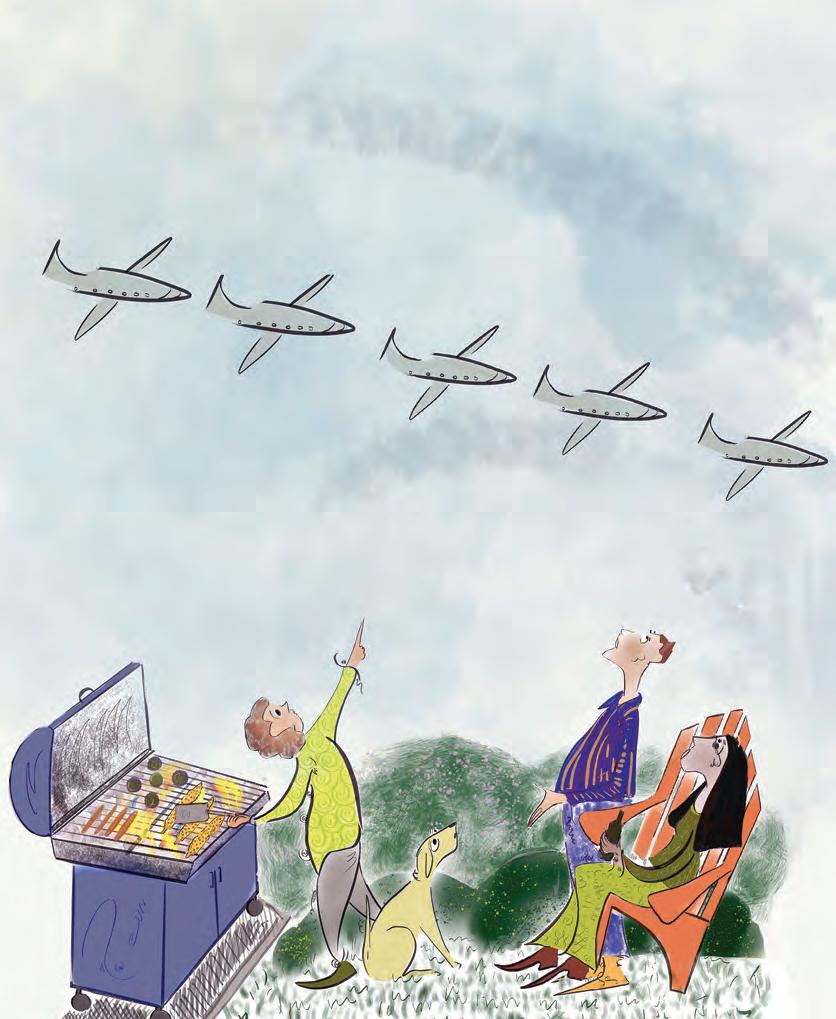
• Fly direct, non-stop when possible. Proportionally, more fuel is burned during take-off and landing, making non-stop flights more fuel-efficient. And check out the International Council on Clean Transportation, which can tell you how to book the least emitting flights (bit.ly/flightsemissions).
• Fly during the day. Contrails and the cirrus clouds created by planes trap heat and cause warming, but especially at night. During the day, these contrails and clouds reflect sunlight back into space, thereby reducing the impact.
• Consider buying offsets, which, while not perfect, can contribute to counterbalancing some of the emissions from flying. Bluedot’s own Dear Dot guides you to the most impactful offset programs (bit.ly/dot-carbonoffsets).
Basically, we all need to come up with a new set of closet rules.
• Stop clicking and buying in the most obvious, convenient places
• Buy a company’s values rather than for a value (when you can)
• Buy less
• Buy only what you love and will absolutely wear
• Buy high quality, natural organic fibers
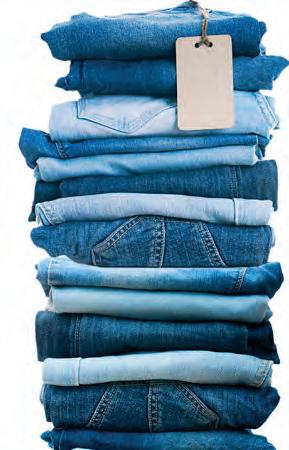
• Buy for all seasons
• Buy used
• Buy local
• Pass it on or … (maybe even), pass it up?
To : Bluedot Living
From: The MV Atlas of Life (MVAL)
Subject: Learn about Vineyard Biodiversity (or Help Study It!)

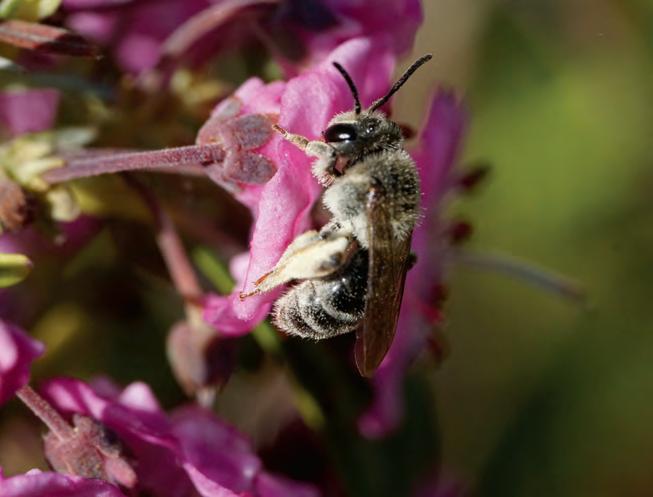
The Martha’s Vineyard Atlas of Life (MVAL) project at BiodiversityWorks exists to promote awareness of the ecological value of the Island. If you’re curious about what species occur here, the MVAL website includes a section of checklists for various groups of plants and animals: mval.biodiversityworksmv.org/species-lists. The site also offers news of important local discoveries, an events calendar, and a section of web, print, and YouTube resources for Vineyard nature buffs.
A fun and easy way to participate in the MVAL project is by using the “community science” platform iNaturalist (inaturalist.org). With an iNaturalist account and either a camera and computer or a smartphone and the iNat app, you can contribute sightings and get assistance (from both artificial intelligence and human experts) identifying what you’ve found. An iNaturalist project pulls together all observations submitted from the Vineyard, allowing users to search or explore almost 30,000 observations of Island plants and animals: inaturalist. org/projects/martha-s-vineyard-atlas-of-life.
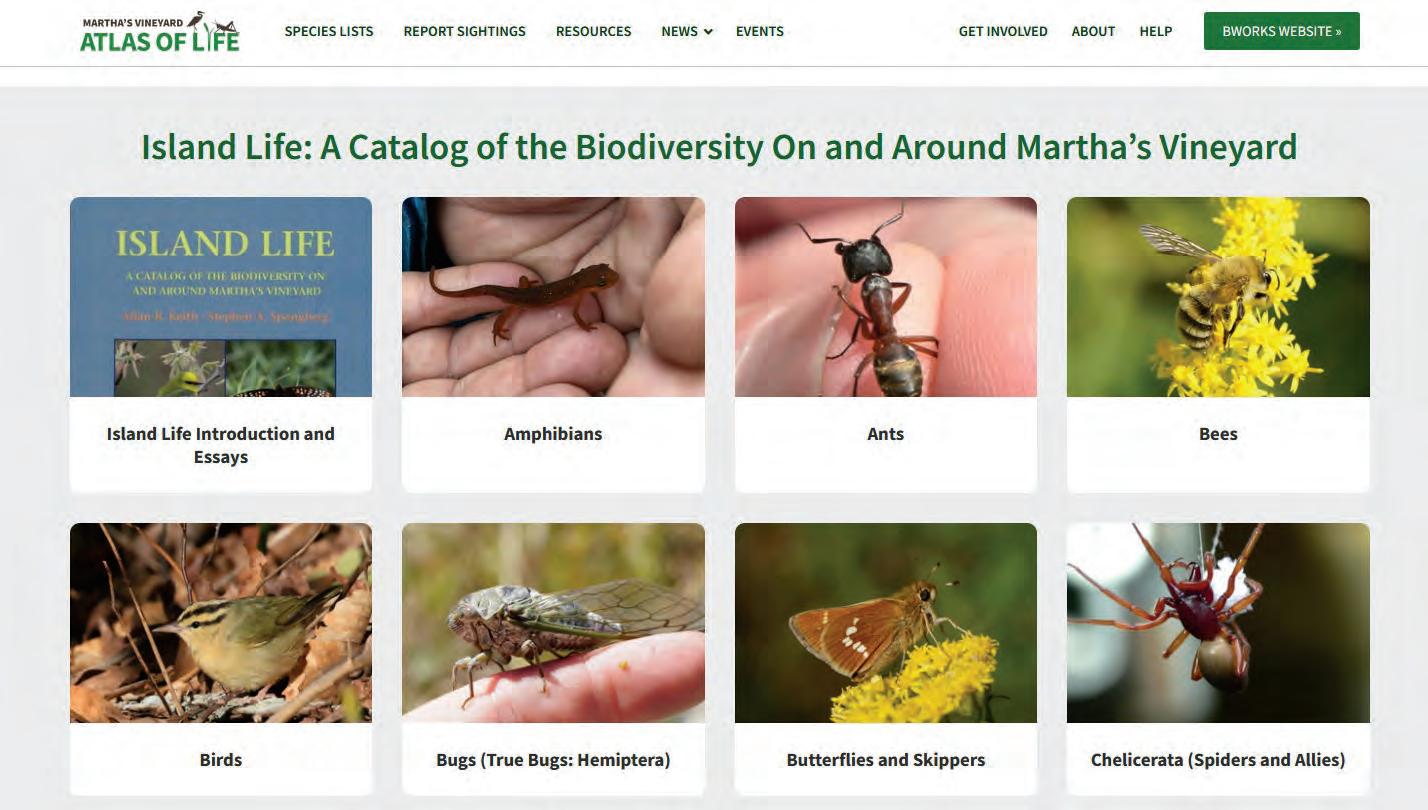
““We must rewild the world,” said none other than Sir David Attenborough, natural historian and creator of iconic nature documentaries.
Which means … what exactly? I think back on a winter visit to Jackson, Wyoming, where an elk was window shopping in the town square, and to the Bangkok market where I watched a monkey wreak delightful (to me!) havoc, leaping from display to display.
An online dictionary uses “rewilding” in this sentence:
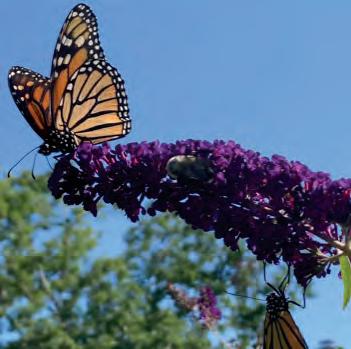
Rewilding? Might be a bit of a tough sell.
But in point of fact, rewilding isn’t nature encroaching on our human environment so much as it is giving nature back to its non-human inhabitants. It’s “restoring ecosystems to the point where nature can take care of itself,” say the folks at Rewilding Britain, whose slogan is “Think Big, Act Wild.” The term itself was coined in the early 1990s by Dave Foreman, co-founder of Wild Earth magazine and The Wildlands Project, according to the podcast Rewilding Earth.
The Global Rewilding Alliance, a network of more than 125 organizations, was formed in 2020 to create and promote rewilding projects around the world. “We believe that the world can be more beautiful, more diverse, more equitable, more wild,” reads the group’s charter.
To that end, the Alliance organized the world’s first rewilding day on March 20, 2021. Though I missed the occasion, the rewilding initiative is growing like, uh, rewildfire. Originally conceived as a North-America-wide initiative focused on the three conservation Cs (cores, corridors, and carnivores), rewilding has expanded to South America, Europe, Africa, Asia, Australia, New Zealand, and more.
Rewilding typically refers to largescale projects — restoring the natural course of rivers and reconnecting them with floodplains, creating wildlife
corridors or moving wildlife to decimated areas to restore biodiversity, cultivating kelp forests and marine ecosystems. But micro rewilding, as it’s called, plays a key role too. Siân Moxon, the founder of Britain’s Rewild My Street, told a reporter that micro rewilding can be as simple as planting a tree, adding a bee bowl or bird bath to your garden, or encouraging vines to climb the side of your home. The good news about micro rewilding is that neatness is out. Nature, says Moxon, is messy. And wild.
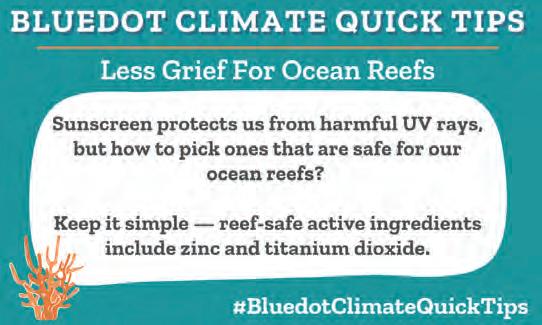
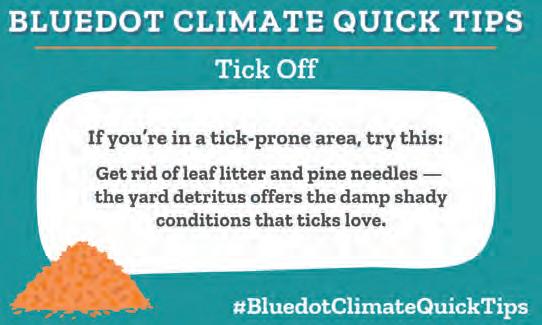 –Leslie Garrett
–Leslie Garrett
"Talk of rewilding North America gives some people nightmares of wolves running through the streets of Chicago and of grizzlies in LA"
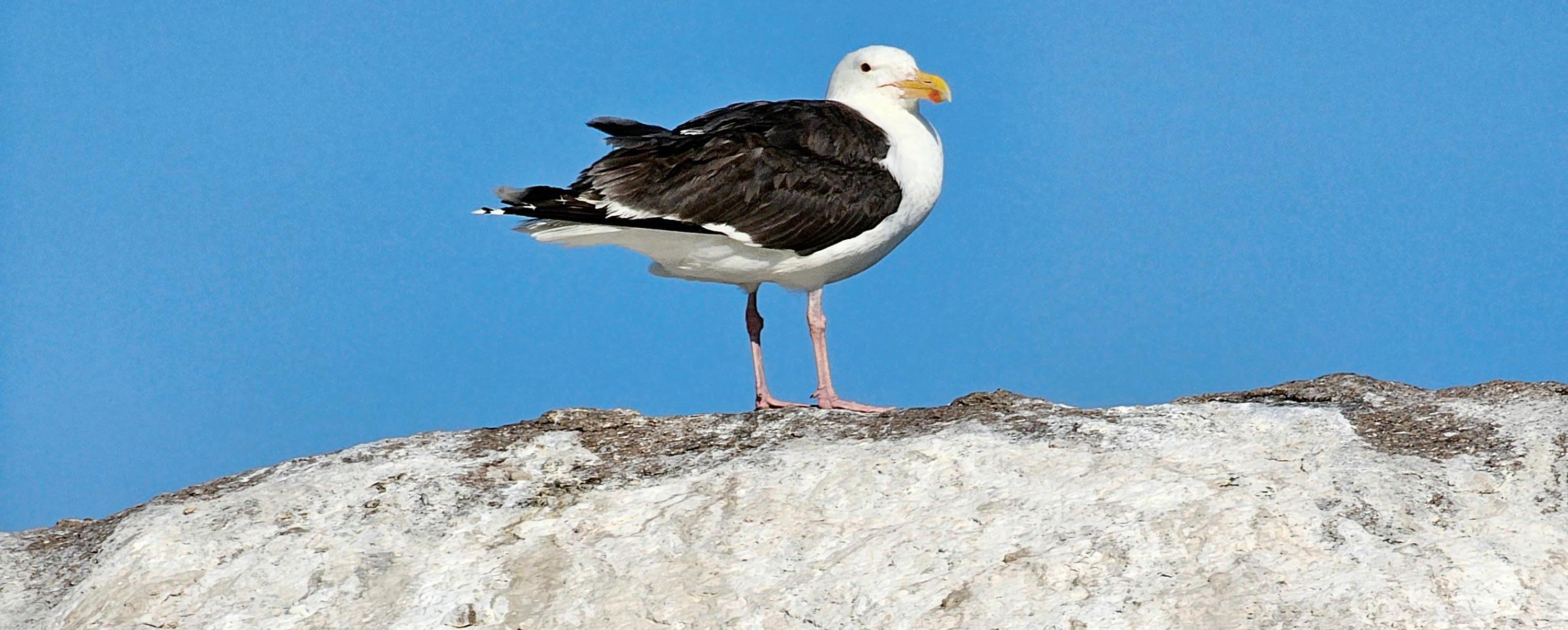
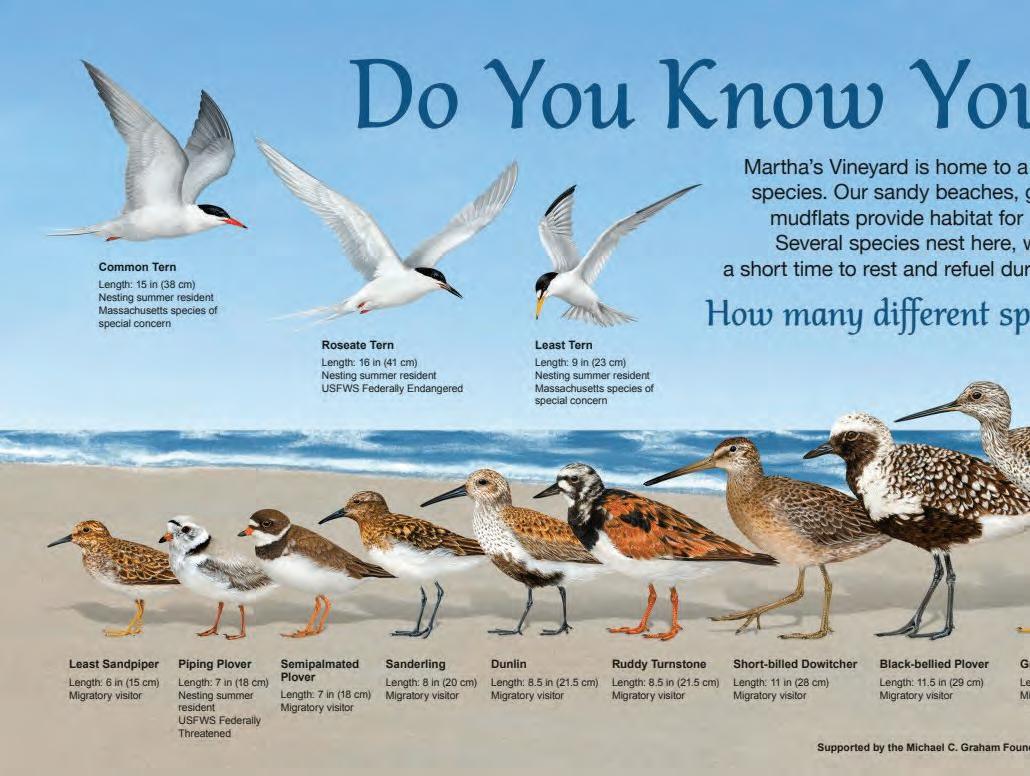
to help threatened shorebirds whose populations are declining globally:
Manage food scraps (carry in and carry out) to prevent attracting predators of eggs and chicks (gulls, crows, skunks, raccoons), respect nesting areas, keep kites and fireworks 200 yards away from posted areas, keep dogs away from nesting areas.
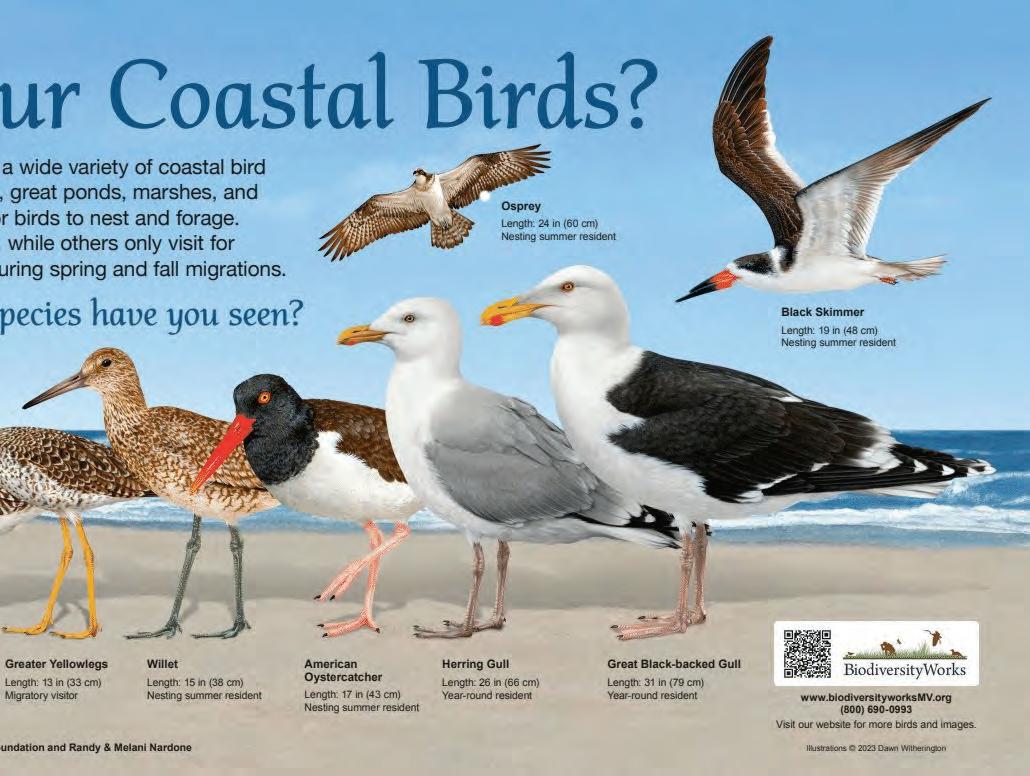
To : Bluedot Living
From: The Staff at Mass Audubon/Felix Neck
Subject: Here are a few of our favorite trails
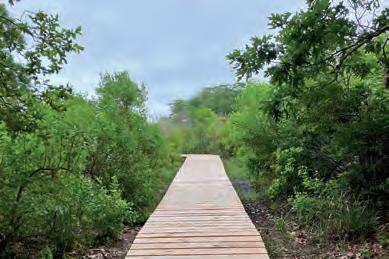
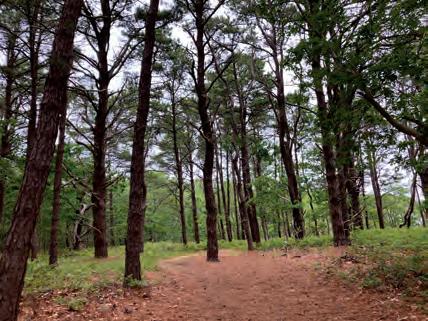
Jessa Elsasser, Felix Neck Property Manager
My favorite trail at Felix Neck is the Marsh Trail. It takes you through several different terrains, making it feel like quite the adventure! It starts off woodsy, then goes to Marsh-y, then beach-y, then everything all over again! Ending (or beginning, depending on your direction!) with a beautiful boardwalk stroll down to the duck blind overlooking the pond, where you can take a rest on the bench and get a secret peek at the swans and any other birds that might be around.
Josey Kirkland, Islands Education Manager
There are great views of the salt marsh and Senge from the Marsh Trail. A bird blind looks over waterfowl pond for peaceful observations and meditation … it even takes you through a pine forest so when the season is right you can look for warblers.
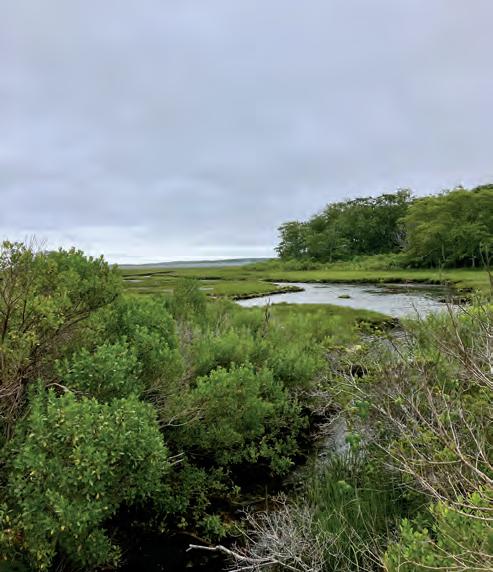
Sydney Pigott, Felix Neck Education Coordinator
I love taking students out to the salt marsh monitoring station and discussing the data that's collected, view Sarson's island, and grab some sea pickles.
Anne Ouwerkerk, ern and Feather Preschool Director
I love walking by the pond, through the woods, over a stream, by the marsh, and being able to see Sengekontacket and the ocean at the end. You can see it all!
Suzan Bellincampi, Islands Director
Here you might just find the best Island view around. The sky and water come together, extending beyond Sengekontacket Pond, over an island filled with birds out to Nantucket Sound. Takes my breath away every time.
Liz Cosgrove, Office Manager
Throughout the year I love to wander down the Sassafras Trail to the inside shoreline of Sengekontacket. The picturesque footbridge over turtle pond is a wonderful place to take photos of the swans and ducks that paddle past. Once at the beach there are plenty of little sea creatures such as hermit crabs, fiddler crabs and minnows to watch as they go about their daily routine. Overhead during the season, you may spot an osprey with a fish in its claws, or a cormorant diving for its next meal. I find walking the trail in the early morning a great way to find peace and start the day fresh.
Oliver Osnoss, Islands Property Manager
The changes in vegetation and habitat. Views out to the pond, and the hidden amphitheater. As a new staff member, I only recently discovered this trail and still have not yet walked all the trails but this one surprised me and stuck out for sure.
Liz Dengenis, Islands Operations Manager
After getting a glimpse of some sunning painted turtles on the pond I love to turn onto the Shad trail and notice the ground beneath my feet slowly becoming more sandy as I search for blueberries and huckleberries starting to ripen (but leave for the birds). Emerging into Major’s Cove in Senge greeted by some sea pickles and maybe a green heron never gets old as I reach the end of the Shad Trail and stroll along the shoreline.
To : Bluedot Living
From: Polly Hill Arboretum
Subject: MV Wildtype: Native Pollinators Grown from Local Island Seeds
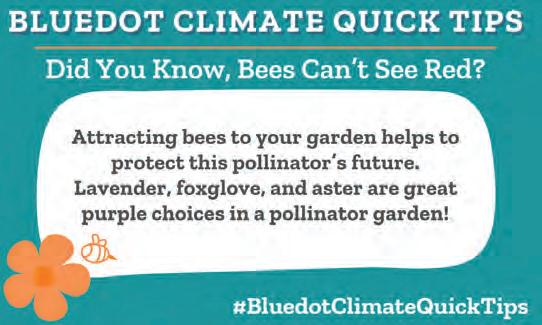
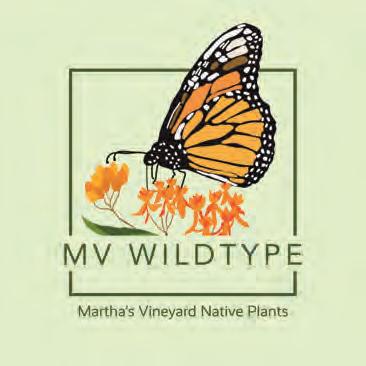
ildtype is a branding mechanism that denotes plants are from Island genotypes — only local genetics are used. Polly Hill Arboretum is the only resource for these plants. This is a guarantee that the species is what it says on the label, and that they come from seeds collected from wild, native plants. Here are some you could plant in your Island yard.
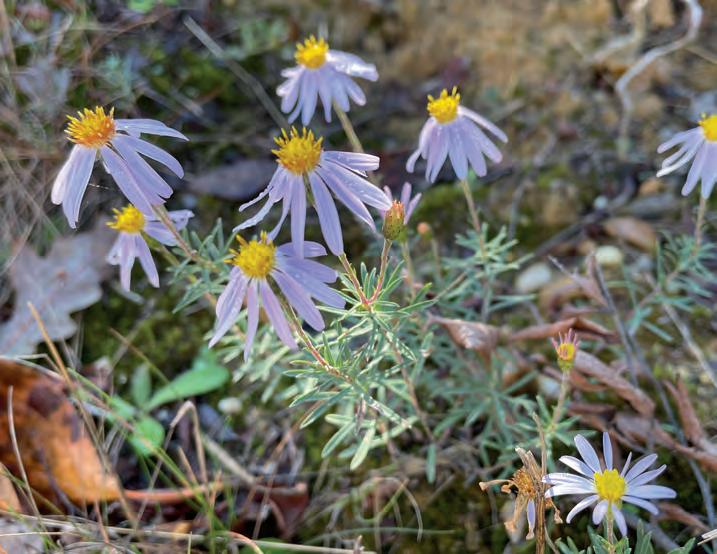
Ionactis linariifolia
Zone: 4 to 9
Type: Herbaceous perennial
Island Native: Native to the Vineyard sandplain
Zone: 4 to 9
Height: 1.00 to 2.00 feet
Spread: 0.50 to 1.00 feet
Bloom Time: July
Bloom Description: Blue-violet to purple with yellow centers
Sun: Full sun
Water: Dry to medium
Maintenance: Low
Flower: Showy, good cut
Attracts: Butterflies
Tolerates: Drought; dry soil; shallow, rocky soil
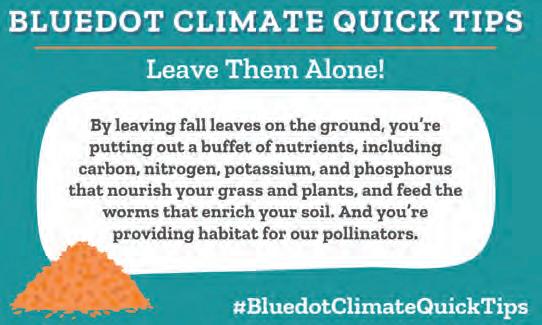
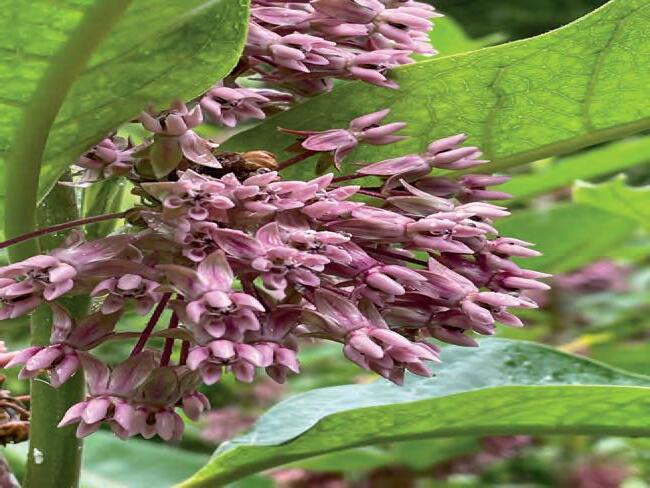
Asclepias syriaca
Zone: 3 to 9
Type: Herbaceous perennial
Family: Apocynaceae, Island Native
Zone: 3 to 9
Height: 2.00 to 3.00 feet
Spread: 0.75 to 1.00 feet
Bloom Time: June to August
Bloom Description: Pink, mauve
Sun: Full sun
Water: Dry to medium
Maintenance: Low
Suggested Use: Naturalize
Flower: Showy, Fragrant
Attracts: Butterflies
Fruit: Showy
Tolerates: Deer; drought; erosion; dry soil; shallow, rocky soil
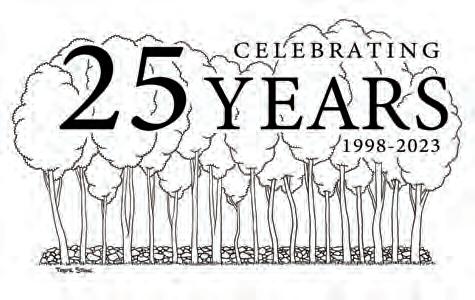
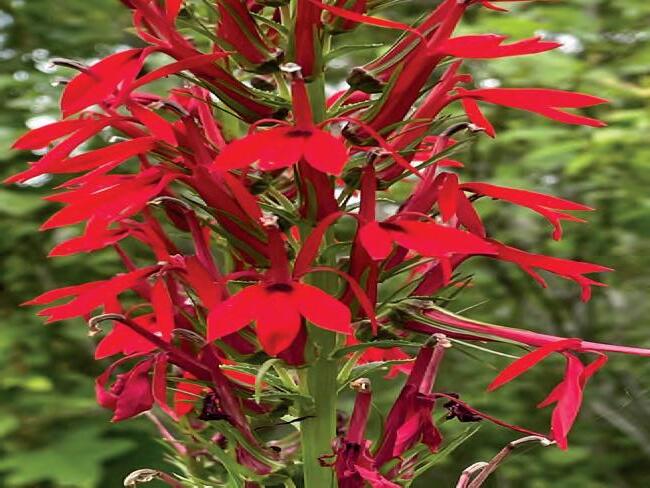
Zone: 3 to 9
Type: Herbaceous perennial
Family: Campanulaceae
Native Range: Americas
Zone: 3 to 9
Height: 2.00 to 4.00 feet
Spread: 1.00 to 2.00 feet
Bloom Time: July to September
Bloom Description: Scarlet red, white or rose
Sun: Full sun to part shade
Water: Medium to wet
Maintenance: Low
Suggested Use: Naturalize, rain garden
Flower: Showy
Attracts: Hummingbirds, butterflies
Tolerate: Wet soils to moderately moist — good for rain gardens
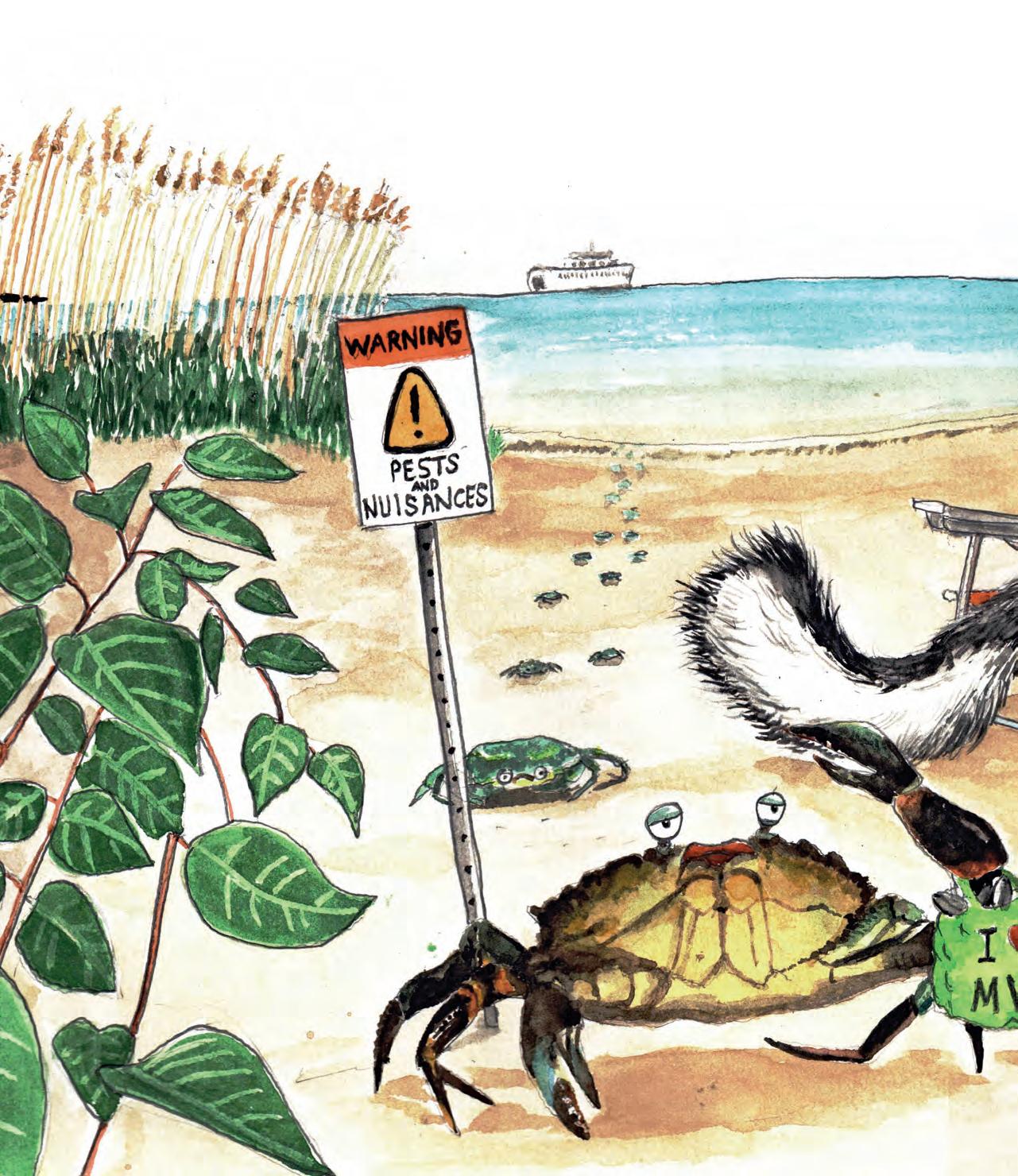 By Leslie Garrett
By Leslie Garrett
The Vineyard plays host to a number of species that aren’t, historically, from around here. Some of these interlopers behave themselves. But others wreak havoc, displacing valuable native species and transforming fragile ecosystems.
Duh … don’t plant invasives.
Remove invasives if they’re on your property but do so in a way that doesn’t cause further spreading. Persistently cutting them back will often do the trick. There are some species, such as Japanese knotweed, Phragmites, and Japanese stilt grass, that should be removed only by professionals.
Plant native species that support biodiversity, especially pollinator gardens, which attract all kinds of insects.
If you have a landscaper, ensure that they have an understanding of the problem of invasive species and a commitment to planting native or noninvasive species.
Don’t bring plants, soil, or mulch from off-Island.
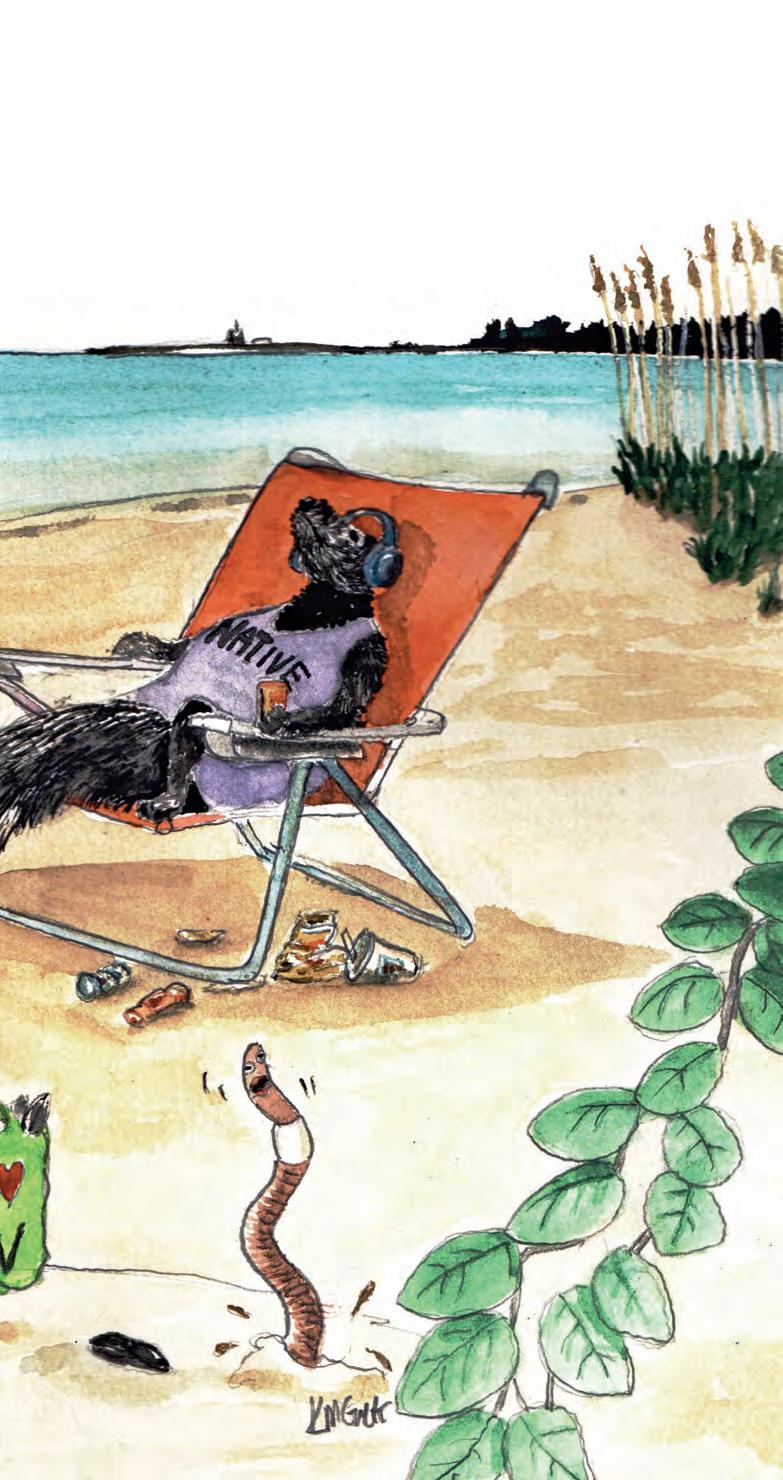
Embrace messiness. Leave seed heads for birds, leave leaf debris for cocoons and larva.
Reduce lawn size and expand garden size.
Install bird houses, bat boxes, and owl boxes in close proximity to native plants.
Tap into Polly Hill Arboretum’s vast database of native or non-invasive options at bit.ly/PHA-invasives.
While methods to eradicate invasive plant species run the gamut from mechanical removal to applying herbicides — which need to be left to the pros — there are still important ways each of us can help.
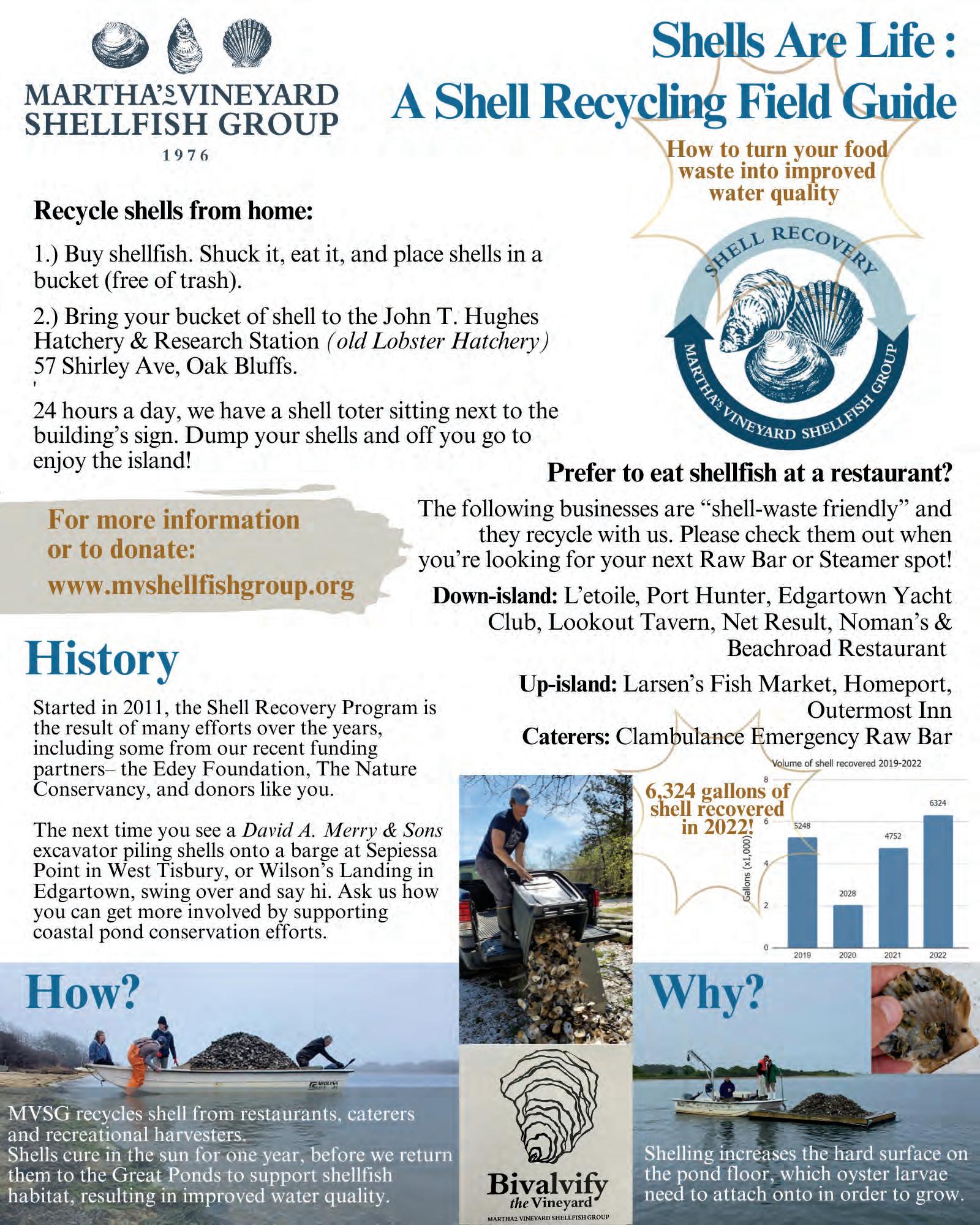
To : Bluedot Living
From: The Mar tha’s Vineyard Fishermen’s Preservation Trust (MVFPT)
Subject: Island F ish for Island Families, and More Resources
Food insecurity is on the rise on the Island. To help, the MVFPT is donating locally caught seafood to Island Grown Initiative to help provide healthy and delicious meals to our Islanders in Need. By donating, you can help create a new market for fishermen to sell their fresh catch, strengthen our local food network, reduce food waste, and make local seafood accessible to local families. Email info@mvfpt.org or visit MVFishermensPreservationTrust.org/Seafood-Donations
This program was named in honor of our late board member and fisherman, Luke Gurney. This program allows fishermen to purchase necessary fishing permits while paying for them over time as they use the permit to make income on the water. Since the launch of this program, we have expanded to help fishermen in the lobster, sea scallop, conch, black sea bass, and fluke fisheries.
In 2021 we purchased and re-opened a wholesale seafood market in Menemsha, which we call the MV Seafood Collaborative. We purchase seafood from approximately 55 local fishing businesses, while providing necessary waterside infrastructure (ice, unload -
TABLE OF CONTENTS
SEASONAL SEAFOOD OF MARTHA'S VINEYARD FINFISH 1.Black Sea Bass 2.Bluefin Tuna 3.Bluefish 4. Fluke 5.Monkfish 6.Scup 7.Striped Bass 8.Tautog 9.Winter Flounder 10.Yellowfin Tuna 1.American Lobster 2.Atlantic Sea Scallop 3.Blue Mussel 4. Channeled Whelk 5.Eastern Oyster 6.Hardshell Clam 7.Jonah Crab 8.Northern Bay Scallop 9.Softshell Clam 10.Squid 1 2 3 4 5 6 7 8 9 10 1 2 4 5 6 7 8 9 10 3
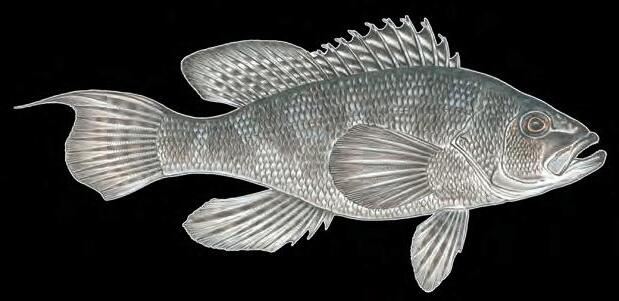
ing, gin boom, and refrigerated space). We continue to build and expand this program and plan to provide more seafood donations while continuing to offer a stable market for fishermen.
of SHELLFISH and CRUSTACEANS

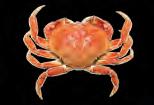
BLUEFISH
and from Spain to Southern Africa. Caught via gillnets, trawls, or rod & reel.
Migratory, ranging throughout the Atlantic Ocean from Nova Scotia to Argentina
Has a rich, full flavor and coarse, moist meat with edible skin. The larger


the fish, the more pronounced the taste. Younger bluefish have sweeter

and milder flesh. Its delicate flavor can be more "fishy" than other types
of seafood. The meat of uncooked bluefish ranges from light tan color to




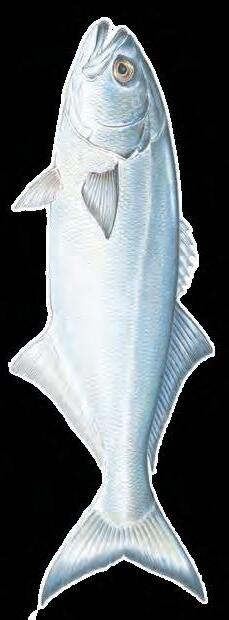
cooking.
blue-gray with a brownish tinge, and becomes lighter when cooked. The strong-flavored, dark strip of meat on the filet may be removed before
Best eaten as fresh as possible; deteriorates rapidly if not immediately iced and tends to degrade over time. It does not keep or freeze well.
PREPARATION LOCAL HARVEST POMATOMUS SALTATRIX ALSO KNOWN AS: TAILOR ELF AND SNAPPER SPECIES INFO July–October Whole (round, or scaled & gutted); Filet
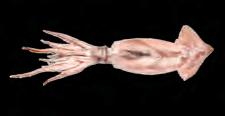

and served whole. Large fish can be baked whole. Bake, Broil, Fry, Grill, Smoke
Grilling allows some of the fat to drip away. Only small bluefish (snappers) Calories: 124 Fat Calories: 38 Total Fat: 4.2 g
can be fried, since larger fish are too oily. Snappers do well breaded, fried, NUTRITION Saturated Fat: 0.9 g Cholesterol: 59 mg Sodium: 60 mg Protein: 20 g Omega-3: 0.83 g
selenium, niacin, vitamin B12, and omega-3s. Good source of magnesium and potassium.
Our Community Supported Fishery share program runs out of our MV Seafood Collaborative headquarters in Menemsha and shares are picked up at the West Tisbury Farmers Market.
We work with universities and other groups to connect fishermen to
scientific projects to help increase our understanding of stocks, species behavior, and how we can harvest in more sustainable ways. Currently we are working on an alternative to horseshoe crab bait in the whelk or conch fishery.
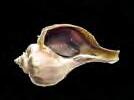

Serves 2
Pristine sea scallops arrive at Vineyard fish docks daily, caught by local fishermen. The quality can’t be beat. The cooking times can’t be beat either — about 2 minutes a side. In this recipe from Catherine Walthers, scallops are paired with an easy lemon herb sauce that cuts the richness of the scallops. You can vary this by substituting pureed squash for the parsnip.
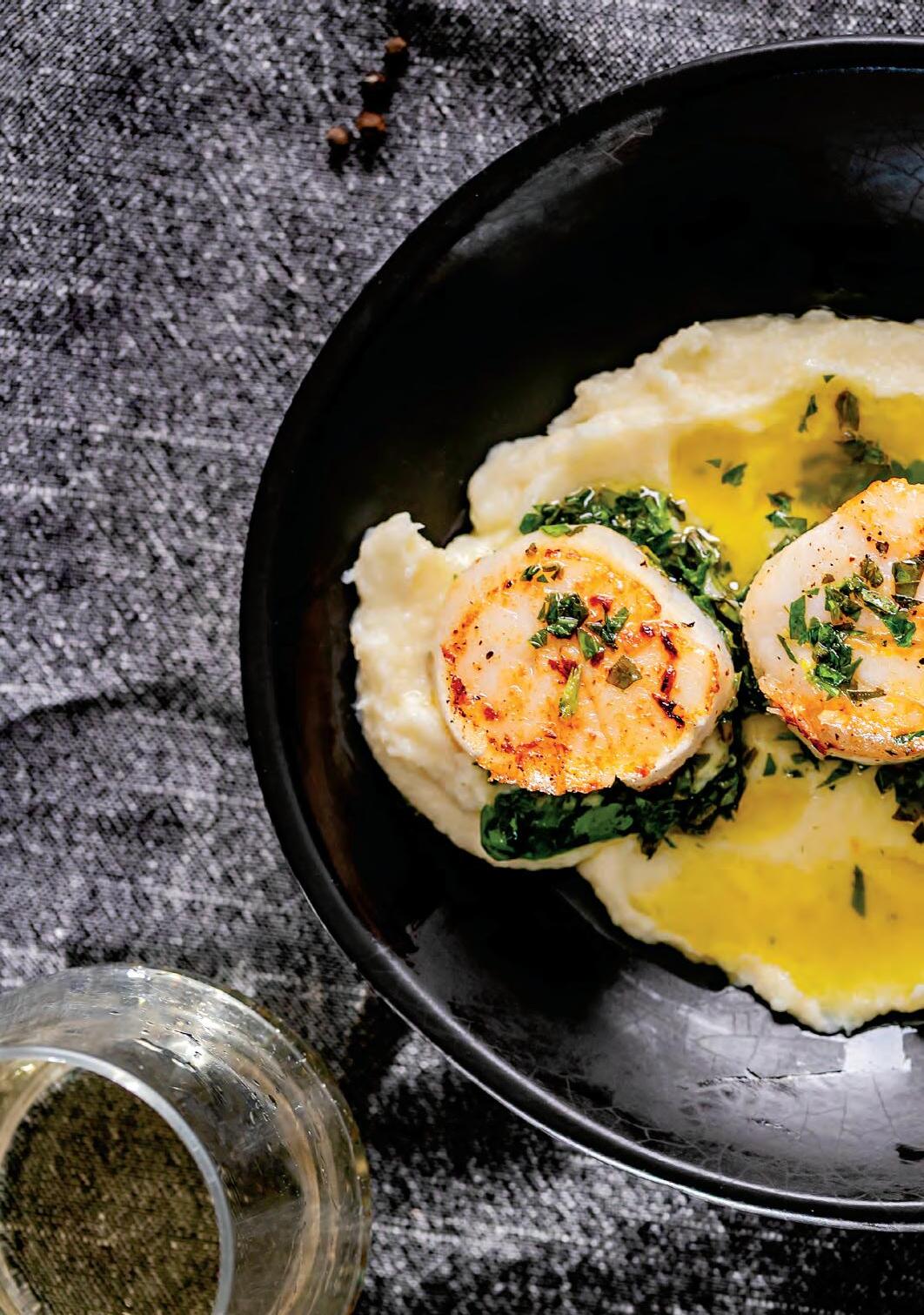
1 Remove the muscle from the scallops and rinse well. Dry on a paper towel and set aside in the fridge until ready to cook.
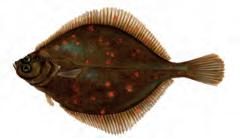
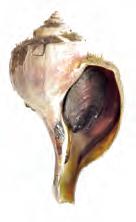

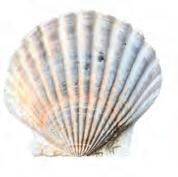
2 Place the diced parsnip in a saucepan of boiling water and cook until tender, about 25-30 minutes. Drain. Puree in the food processor with 1 tablespoon of butter and the half-and-half. Season with salt and pepper and set aside in a bowl.
3 Make the herb sauce by combining the basil, parsley, olive oil, shallot, and salt and pepper. Just before serving, add the lemon juice (to keep sauce bright green).
4. To cook the scallops, use a cast-iron skillet or any skillet with a thick bottom. Heat on medium-high. Add the remaining tablespooon of butter and a bit of olive oil and sear the scallops on one side until golden, about 2 minutes. Season with salt and pepper. Flip and sear another 1 to 2 minutes longer.
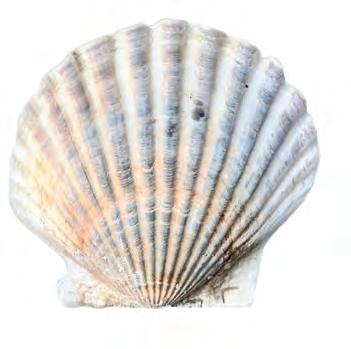
5. To plate, smear reheated parsnips on the plate. Place seared scallops on top and spoon the sauce alongside or in dollops on the plate. Enjoy!
Ingredients
6-8 sea scallops or more depending on appetite
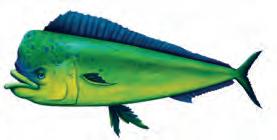
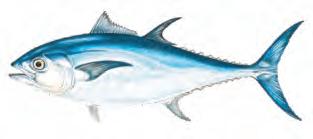
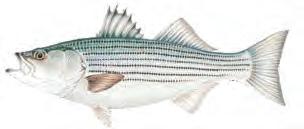
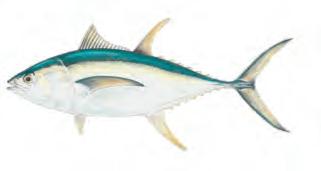
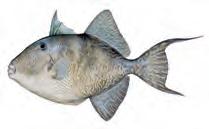

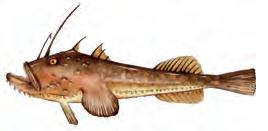
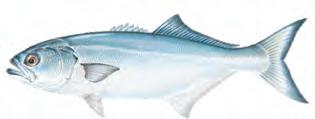
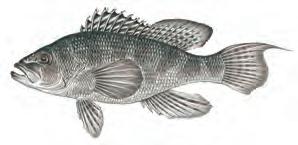
3-4 parsnips peeled and diced, about 2 cups
bsp. butter, divided
1/4 cup half-and-half
O live oil
Salt and pepper
Lemon Herb Sauce
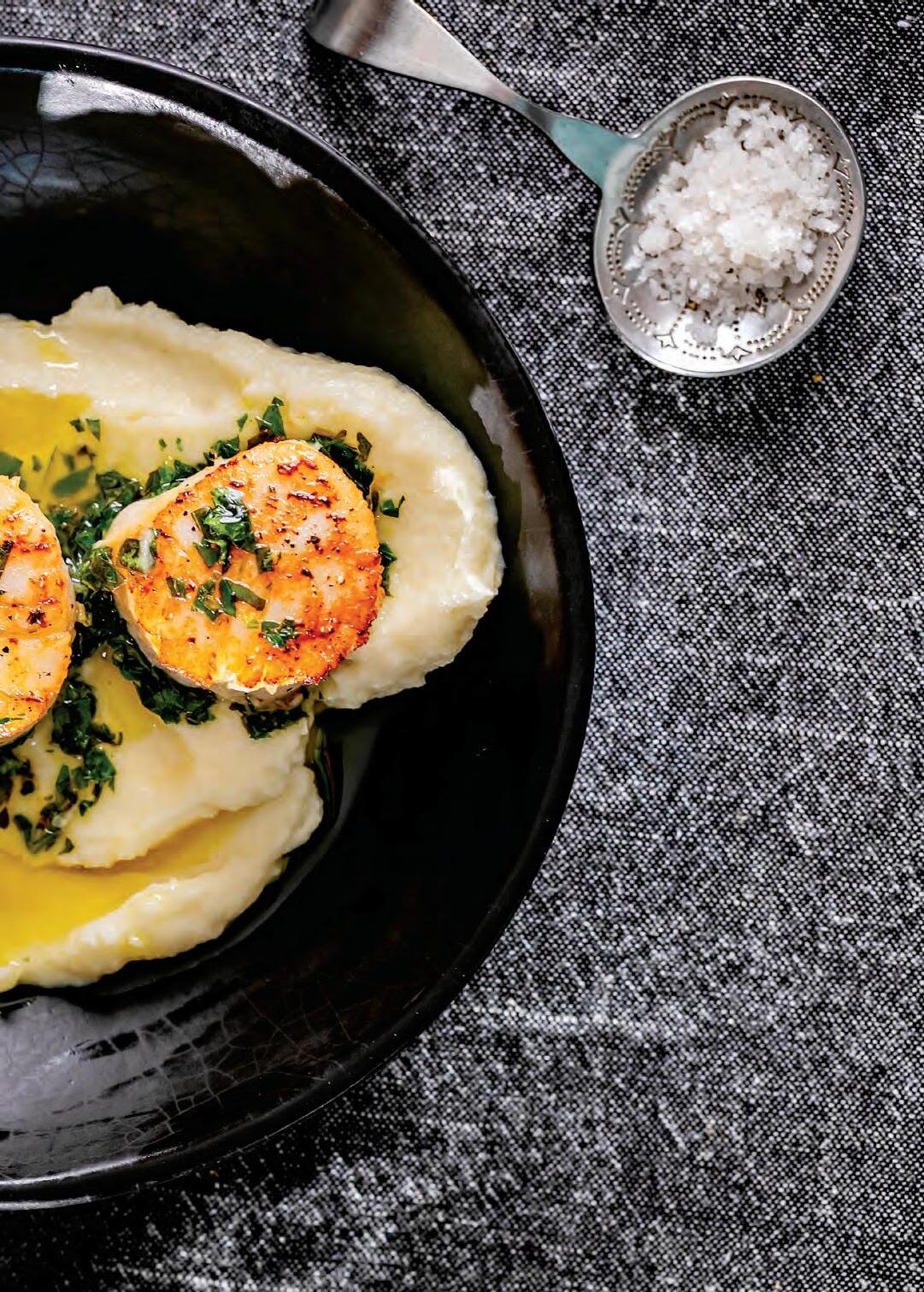
2 Tbsp. fresh basil, chopped finely
2 Tbsp. fresh parsley leaves. chopped finely
6 Tbsp. extra virgin olive oil
1 Tbsp. shallot, finely minced

1/2 lemon (about 2 tbsp.
Salt and fresh pepper
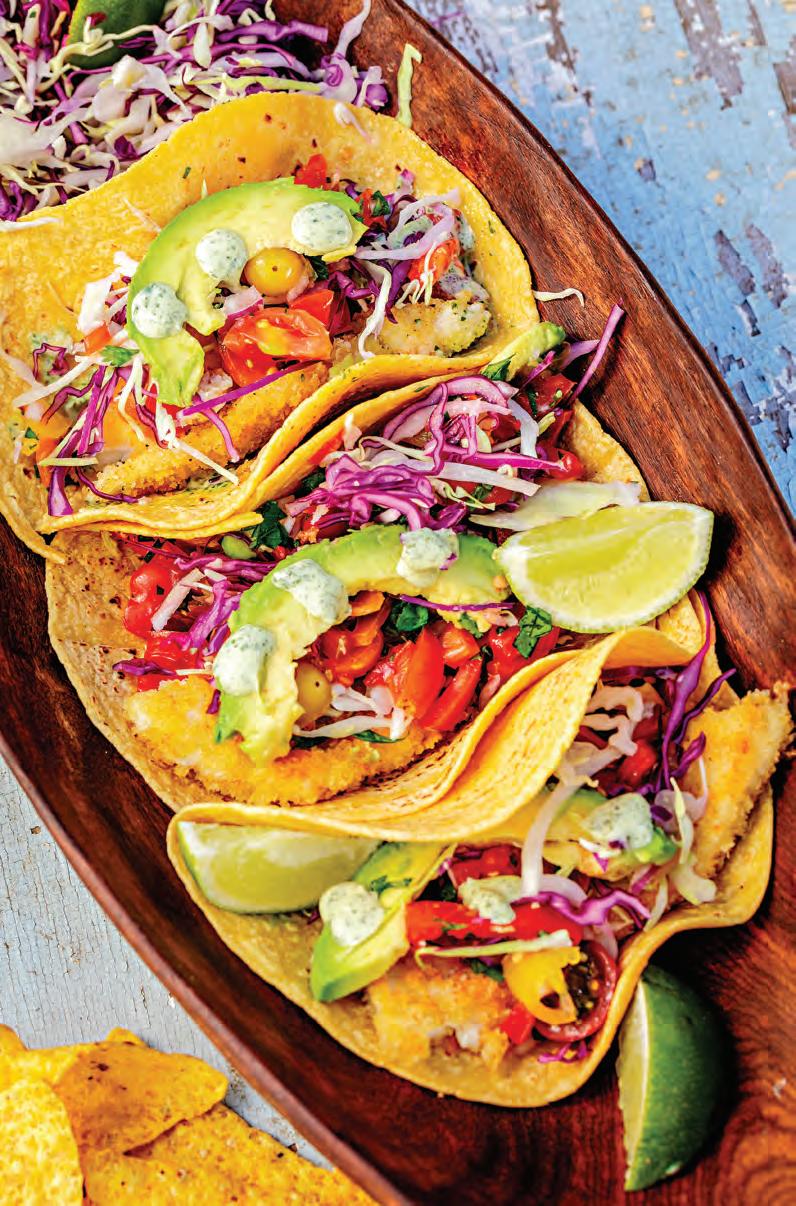
Serves 4
Fluke is a popular, locally sourced fish. It’s a type of flounder, but locals here often label it as Vineyard Sole. You can use fluke in recipes that call for sole. It’s a favorite of mine and perfect for tacos. All the toppings can be made ahead of time, earlier in the day, or a few hours ahead. Just before serving, cook the fish and heat the tortillas.
3 to 4 pieces of fluke
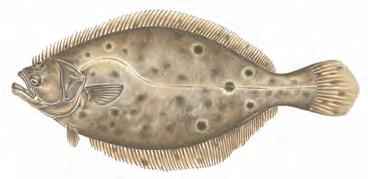
1 egg
1/4 cup flour
2 cups panko bread crumbs
1 package corn tortillas
Ingredients for toppings, below the preparation instructions.
1. To prep and cook the fish. Slice the fish in half lengthwise to make smaller fillet pieces (3- to 4-inch long pieces). Cut any long pieces in half. Season both sides with salt and pepper. Have 3 bowls ready with flour, egg, and panko bread crumbs seasoned with the spices. Dip each fillet piece in flour first, then egg, and finally press into the bread crumbs on each side. Put in the refrigerator until ready to cook.
2. Make the toppings, set aside in bowls that will go on the table.
3. Heat a heavy skillet, add a bit of olive oil and butter, and cook the fish until golden on each side, approximately 3 or 4 minutes per side (though this can change depending on thickness). The amount of oil/butter depends on size of pan – but it should be enough to get crust golden. While fish is cooking, heat the corn tortillas according to package instructions.
4. Place everything on the table — the bowls of toppings, fish on a platter, and tortillas in a basket so everyone can help themselves.
Combine chopped fresh tomatoes, seeds squeezed out, (Maine Backyard brand are good winter tomatoes) with 1 tablespoon or so finely chopped red onion and red pepper, some chopped cilantro, a minced garlic clove, olive oil, and squeeze of a lime. Taste and adjust.
In a food processor, add about a cup of Hellman’s mayo with a good handful of chopped cilantro (about half a bunch), pinch of salt, and squeeze of 1/2 or 1 lime, depending on juiciness. Process until smooth. Taste and adjust.
Combine thinly sliced green cabbage, maybe some red for color, and a grated carrot.
Recipe from Catherine WalthersServes 4
For the roasted fingerling potatoes:
1 pound fingerling potatoes
3 sprigs fresh rosemary
4 sprigs fresh thyme
3 tblsp extra virgin olive oil
Sea salt
Freshly ground
black pepper
For the tautog:
4 tautog fillets
Sea salt
Freshly ground
black pepper
3 tblsps extra virgin olive oil
For the salsa verde:
2 medium c loves garlic
1 tsp sea salt
1 tsp orange zest
1 tsp lemon zest
2 tblsps fresh lemon juice
1/2 cup extra virgin olive oil
1/2 cup loosely packed
chopped fresh
flat-leaf parsley
1/2 cup losely packed
chopped fresh basil
Freshly ground
black pepper
Tautog is a beautiful white fish seasonally available around Martha’s Vineyard starting in September and continuing through October, possibly into November. Get out of your fish rut by trying a few new sustainable species. In this recipe, provided by Vanessa Seder, tautog is paired with roasted potatoes and a wonderful herb sauce. Bonus: This sauce goes nicely with other pan-seared fish varieties. Seder is the author of Eat Cool and Secret Sauces.
For the fingerling potatoes:
1. Preheat the oven to 425 degrees.
2. Halve the potatoes and place on a parchment-lined baking sheet. Add the sprigs of rosemary, thyme, olive oil, salt and pepper, and toss to combine. Spread out on the baking sheet and place in the oven.
3. Roast the potatoes, tossing once or twice during cooking, until the potatoes are cooked through and golden brown in parts, about 45 minutes.
For the salsa verde:
1. Meanwhile, place the garlic cloves on a cutting board. Using the side of a chef’s knife, press to crush the garlic. Add the salt to the garlic and continue to chop and press with the side of the knife until a paste forms.
2. Transfer the salted garlic to a bowl along with the orange zest, lemon zest, lemon juice, and olive oil. Stir in the parsley and basil, and season to taste with pepper. Set aside.
For the tautog:
1. Remove the fish from the refrigerator and transfer plate lined with paper towel. Let stand for 15 minutes at room temperature. Before frying, make sure the surface of the fish is very dry, using paper towels to wipe up any additional moisture. Season both sides of the fish with salt and pepper.
2. Heat a large 12-inch cast-iron or non-stick skillet over medium-high heat. Add the oil and heat until it shimmers.
3. Carefully add the tautog fish to the skillet, presentation side down. Lightly press down on the fish to create a nice sear, do not move the fish. Cook until golden brown on the surface, 4 to 5 minutes. Use a fish spatula to carefully flip the fish and continue to cook 2 to 3 minutes until just opaque.
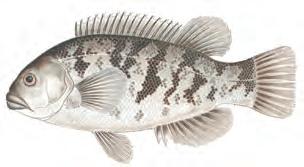
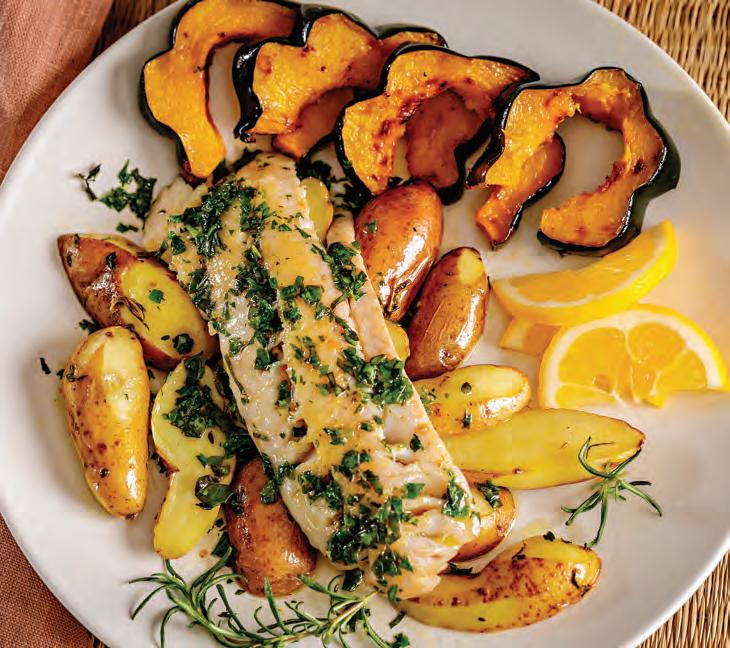
Note about kelp: I created all of these recipes when I had fresh kelp this spring. If you are unable to get fresh kelp, try the fresh-frozen kelp Cottage City sells at the West Tisbury Farmers’ Market. The volume or texture after freezing could be different, so use your cook’s judgment when measuring.
— Catherine WalthersYou can usually find the freshest crab in the frozen fish case at one of the local fish markets. These go so fast, I usually start by doubling the recipe. If you catch and pick your crabs, lucky you. Makes 6 2½-inch crabcakes. Serves 3–4.
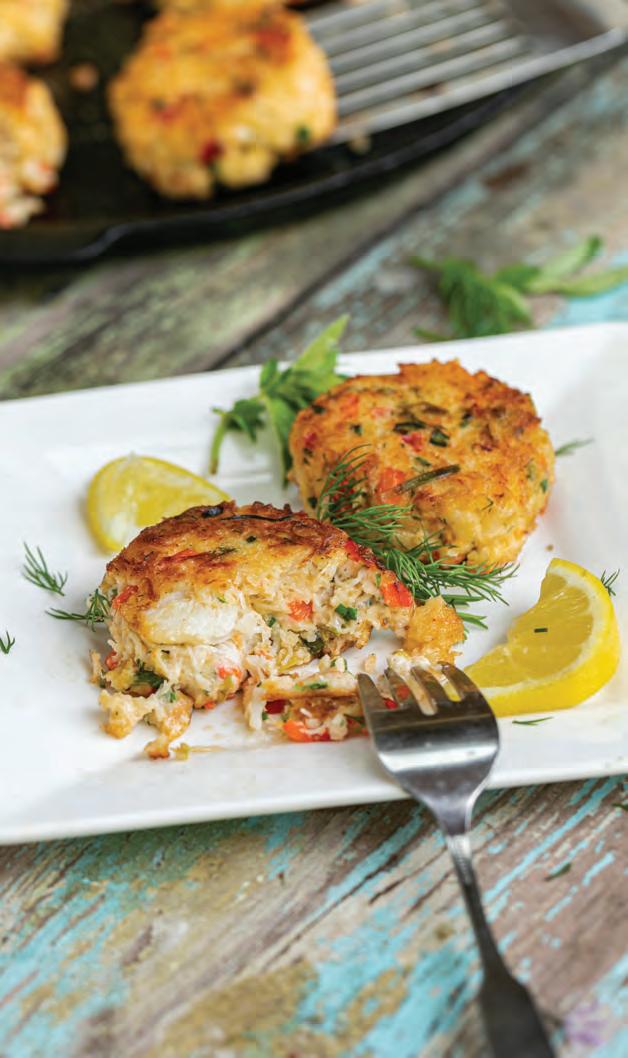
18-oz frozen package of Jonah or rock crab, thawed (about 1½ cups)
1 egg, mixed with a fork
¼ cup mayonnaise
⅓ cup panko breadcrumbs
3 tbsp. scallions or chives, green section, finely chopped
¼ cup minced red pepper
⅓ cup chopped fresh or fresh-frozen
Martha’s Vineyard kelp
1 tbsp. fresh lemon juice
1 tbsp. fresh chopped dill
¼ tsp. each salt and pepper
Remoulade sauce, your favorite recipe, to serve
Squeeze any additional liquid from the crab after it has thawed, and add to a mixing bowl. Add the egg, mayonnaise, panko breadcrumbs, scallions, red pepper, kelp, lemon juice, dill and salt and pepper. Mix gently. Let sit about 10–15 minutes before forming into cakes to let breadcrumbs absorb extra moisture. Form into cakes about 2 to 3 inches in diameter. Add some butter and olive oil to a skillet and gently cook until each side is golden. Serve with a remoulade sauce or salsa.
This simple, yet delicious chowder has both clams and kelp seaweed and is a match made on Martha’s Vineyard. I adapted it from a recipe I first tried at Jessica Roddy’s Chilmark home, after she adapted it from a New York Times recipe by Sam Sifton.
3 to 4 dozen medium-sized clams, cherrystones work nicely
3 tbsp. butter
2 med. onions, diced
4 med. Yukon gold potatoes, peeled and cut into approx. ½–inch dice
¾ cup white wine
4 sprigs thyme
2 bay leaves
2 cups cream
1 cup chopped fresh (or freshfrozen) Cottage City Kelp
Freshly ground black pepperChopped parsley
Oyster crackers, optional
Cook the clams in batches. Use a large wide-bottomed pan with a lid, and bring about 1½ cups of water to a boil. Add the clams in one layer, cover, and steam until the clams open (4 to 6 minutes for littlenecks or cherrystones). I lift the lid a few times and remove any opened clams to keep them as tender as possible. When all the clams in the first batch are open and removed, pour the clam broth into a measuring cup, leaving the last bit of sandy water in the pan. Rinse the pan and repeat, adding another 1½
cups of water until all the clams are cooked. Reserve 4 cups of clam broth.
Let cool slightly and remove from the shell. Pour the reserved clam broth through a fine mesh strainer, coffee filter, or paper towel to catch any remaining sand.
Put a soup pot on medium-low and melt the better. Add the onions and cook, stirring frequently, until they are soft but not brown, about 10 minutes. Stir in potatoes and wine, and continue cooking until wine has nearly evaporated and the potatoes have just started to soften, about 5 minutes. Add 3 cups clam broth. Potatoes should be covered by the liquid, so add more clam juice, if needed. Add the thyme and bay leaves.
Partly cover the pot and simmer gently until potatoes are tender (make sure they are tender), approximately 10–15 minutes.
Meanwhile, roughly chop the clams (not finely chopped).
When potatoes are tender, add cream, and stir in chopped clams and chopped kelp. Add black pepper to taste. Let sit until ready to serve. Just before serving, remove the thyme sprigs and bay leaves, and heat gently but do not let chowder come to a boil. Garnish with chopped parsley. Serve with oyster crackers, if you have them.
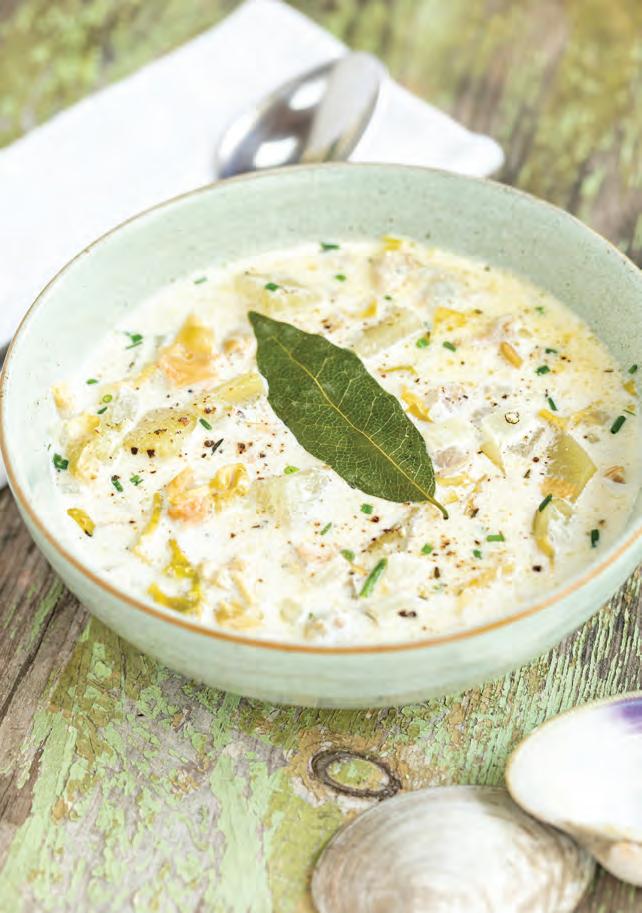
This makes a great sauce for fish. I’ve used it on crispy local fluke and scallops, but try it with your favorite fish preparation. Makes enough for 2 dinners for 4.
½ cup fresh Martha’s Vineyard kelp, chopped
1 stick of butter, room temperature
1 tbsp. shallots, minced
2 tsp. fresh tarragon, chopped
1 tsp lemon zest (from about 1 lemon)
1 tbsp. lemon juice
Place all the ingredients in a mixing bowl. Using a fork, press the butter and other ingredients together until evenly combined. I place the mixture on a piece of plastic, in the rough shape of a stick of butter. Roll up and twist the ends together. Refrigerate until ready to use.
To use: If the piece of fish I’m using is cooked in a heavy skillet, I usually wipe out the skillet when the fish is done before adding the compound butter. Usually the sauce serving is 1 to 2 Tbsp. of the kelp butter compound per serving. Melt the compound in the pan and cook on medium-low a few minutes so shallots are cooked. Add additional lemon juice, if needed. Spoon sauce around the fish.
This is a great dressing for any summer salad, and also perfect as a dip for fresh-cut veggies. For the dip, you can add a dollop more of mayonnaise to thicken, if desired.
⅓ cup low-fat buttermilk
¼ cup mayonnaise
2 tbsp. yogurt
1 clove garlic, finely minced
1 tbsp. apple cider vinegar
2 tbsp. canola oil
¾ tsp. Martha’s Vineyard
kelp flakes pepper
2 tbsp. minced fresh chives
In a bowl, whisk together the buttermilk, mayonnaise, yogurt, garlic, and vinegar. Whisk in the oil until creamy. Season generously with salt, lots of pepper, and chives.
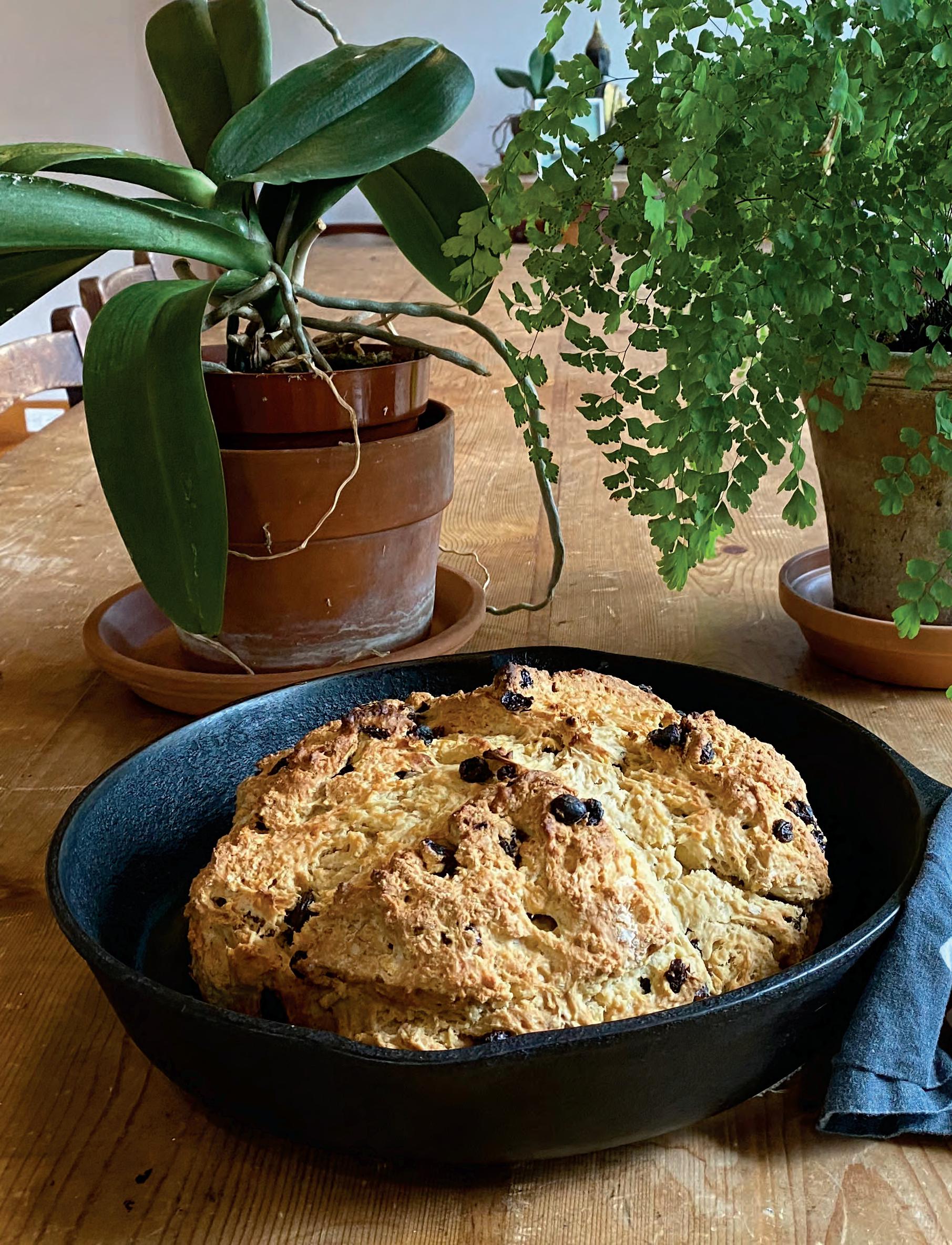 Story and Photos by Mollie Doyle
Story and Photos by Mollie Doyle
Even though I lived in New York City for more than a decade, had eaten food by some of the city’s best chefs, and edited many cookbooks by some of these chefs, I did not sincerely appreciate food until I was pregnant. In fact, it was food that told my now-husband Thomas and I that we were pregnant. We were at the International Documentary Filmfestival Amsterdam, and had just eaten a fantastic lunch of butternut squash soup and salad, when we walked by one of the city’s many shwarma shops, and I just turned in, ordered a chicken kebab, and inhaled it before Thomas could vocalize his shock. Until that moment, I had been oscillating between vegetarianism and veganism for years. A day later, I told him I wanted — no, needed — a burger. He suggested that we get a burger and a pregnancy test. Sure enough I was, as they say in Dutch, zwanger. For the nearly 10 months I was pregnant with our daughter, I felt like I was eating every food, every flavor, for the first time. It was amazing. I felt liberated. After years of being ridiculously careful about every piece of food I put in my mouth, I ate what I was craving. This included wheat, some meat and poultry, and cheese. Oh my god, cheese! And bread. I no longer cared what anyone had to say about gluten, bread was ... no, is ... a miracle.
A day or so after our daughter Emma was born, we left the hospital and went to my parents’ house. It was early August, and we were lucky that they were delighted to house two new, overwhelmed parents. I remember sitting down in a big white chair with Emma sleeping in my arms, and feeling the weight of parenthood descend. This incred ible creature was now out in the world, and it was my job to keep her alive. Could I do it? The terror came flying in. This was not haunted house terror, it was visceral, I-am-drowning-
● Unlike many pans, cast iron is not coated in harmful toxic chemicals.
● A well-seasoned cast iron pan is as nonstick as any coated, nonstick pan .. .but again, no chemicals!
● Except by copper, the even heat distribution of a cast iron skillet is unparalleled.
● Cast iron skillets are a relative bargain. A Lodge 12-inch skillet is around $28, whereas an AllClad skillet is around $140, and an enameled cast iron 12-inch Le Creuset skillet is about $210.
● They are tremendously versatile. You can cook with cast iron on your stovetop — from sauces to poaching — and use it for grilling or baking in your oven.
will-I-survive terror. At that moment, my mom walked into the room bearing a plate of warm Irish soda bread. I could smell the grated orange peel. I slathered a slice with salty butter and took a bite. The sweetness of the currents with the bite of citrus told me it was all going to be OK. I could do this. All that was ahead of me. Known and unknown.
So I share this recipe with you because it is one of those special memory foods for me. Because this Irish soda bread reminds me of food’s incredible power to soothe, heal, and inspire. Because it is delicious.
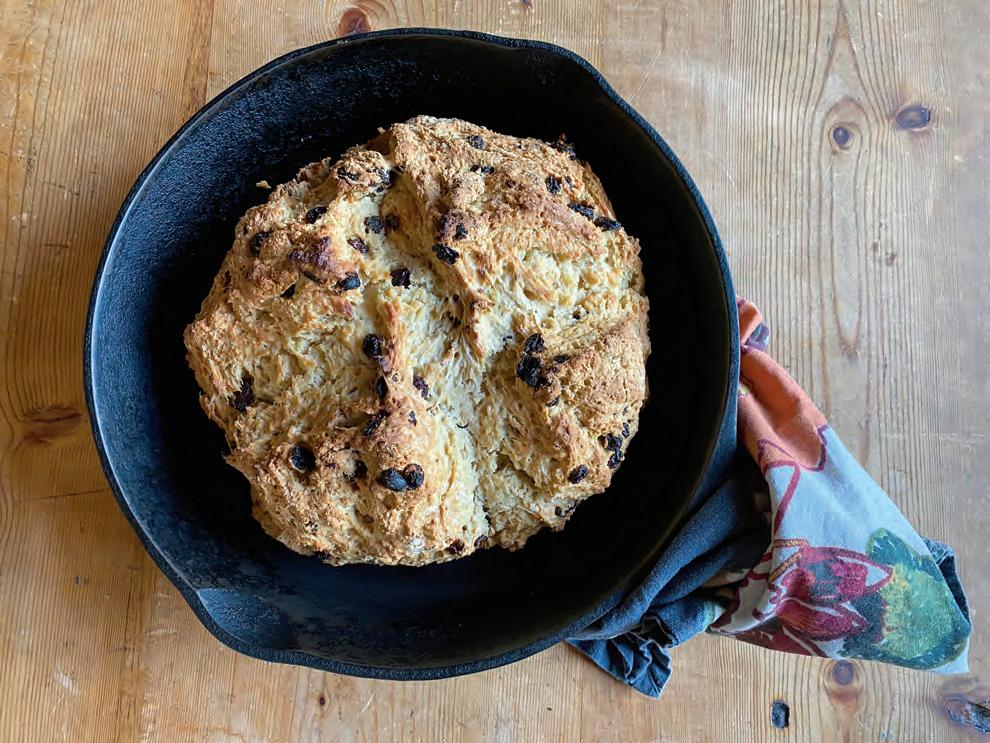
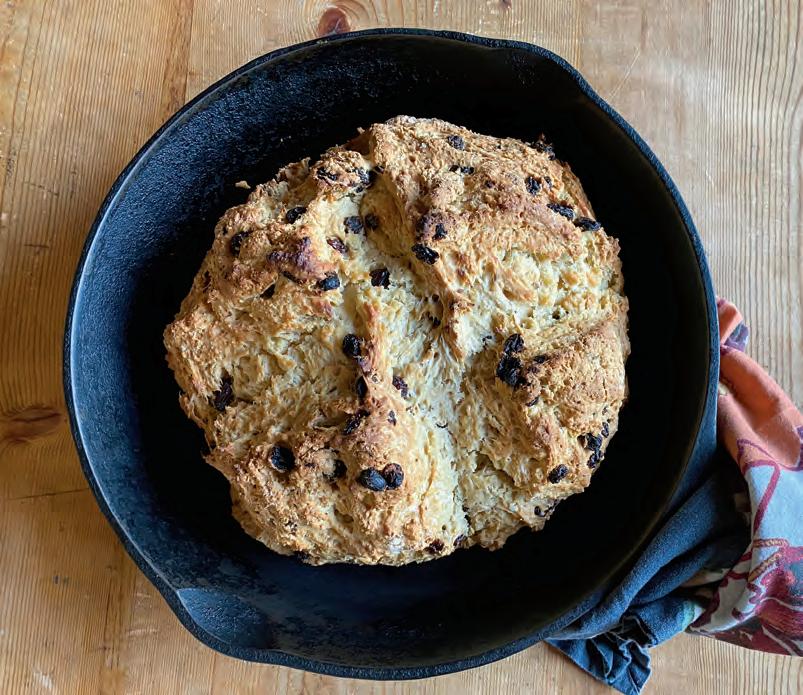
Great for a scared new parent, or anyone who loves yummy bread.
4 cups all-purpose flour, plus a tsp. for currants
3 Tbsp. sugar (or less)
1 tsp. baking soda
1½ tsp. kosher salt
4 Tbsp butter, cut into cubes
1 egg
1¾ cups buttermilk (make sure you shake it!)
1 tsp orange or lemon zest
1 cup dried currants
Preheat the oven to 375°. Line a 10-inch cast
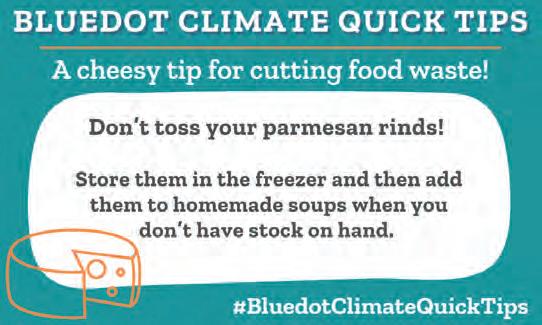
• E lectric tea kettles are far more energy efficient than stove top versions. The National Energy Lab estimates that an electric tea pot is 80% more efficient than using a gas stove. Gail Arnold says, “I never use a stove to boil water. If I need to add boiling water to a soup or something, I use our electric tea kettle.”
• Composting your food waste makes an enormous difference. According to Energy Shrink, the average household produces two tons
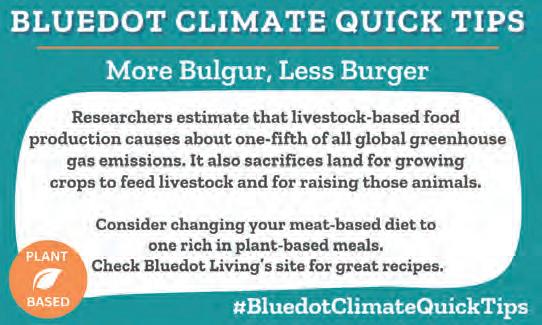
of municipal solid waste per year. “Of this, 69.5%, or 2,880 lbs. (1300 kg) is compostable.”
• Using non-toxic pans reduces exposure to harmful chemicals for everyone – from the people manufacturing them to the people using them.
• Use cloth kitchen towels in place of paper towels as much as possible. But, as Gavin Smith said, “Sometimes paper ones are just necessary.” In that case, look for 100% recycled.
• Use small appliances more than big ones. Tina Miller says a toaster oven can roast a chicken as well as an oven and uses far less energy.
• Use coffee equipment that does not create waste. In other words, please ditch the pod machine.
• Zap the microwave. In 2018, the University of Manchester in England conducted a study on microwaves and carbon emissions. Their conclusion: “Microwaves could be as bad for the environment as millions of cars.” It turns out that “Microwaves emit 7.7 million tonnes of carbon dioxide equivalent per year in the EU. This is equivalent to the annual emissions of 6.8 million cars.” Part of the issue with microwaves is that people throw theirs out before they need to, which adds to our human waste problem. So not only do they use a tremendous amount of energy, but they also increase our trash problem, which again, points to the idea of buying better and holding on to what you have longer.
Island chefs do so much research and really think about their tools, about appliances that will be efficient and effective, [and don’t] always buy new, instead heading to yard sales, Chicken Alley, and the Dumptique for kitchen supplies.
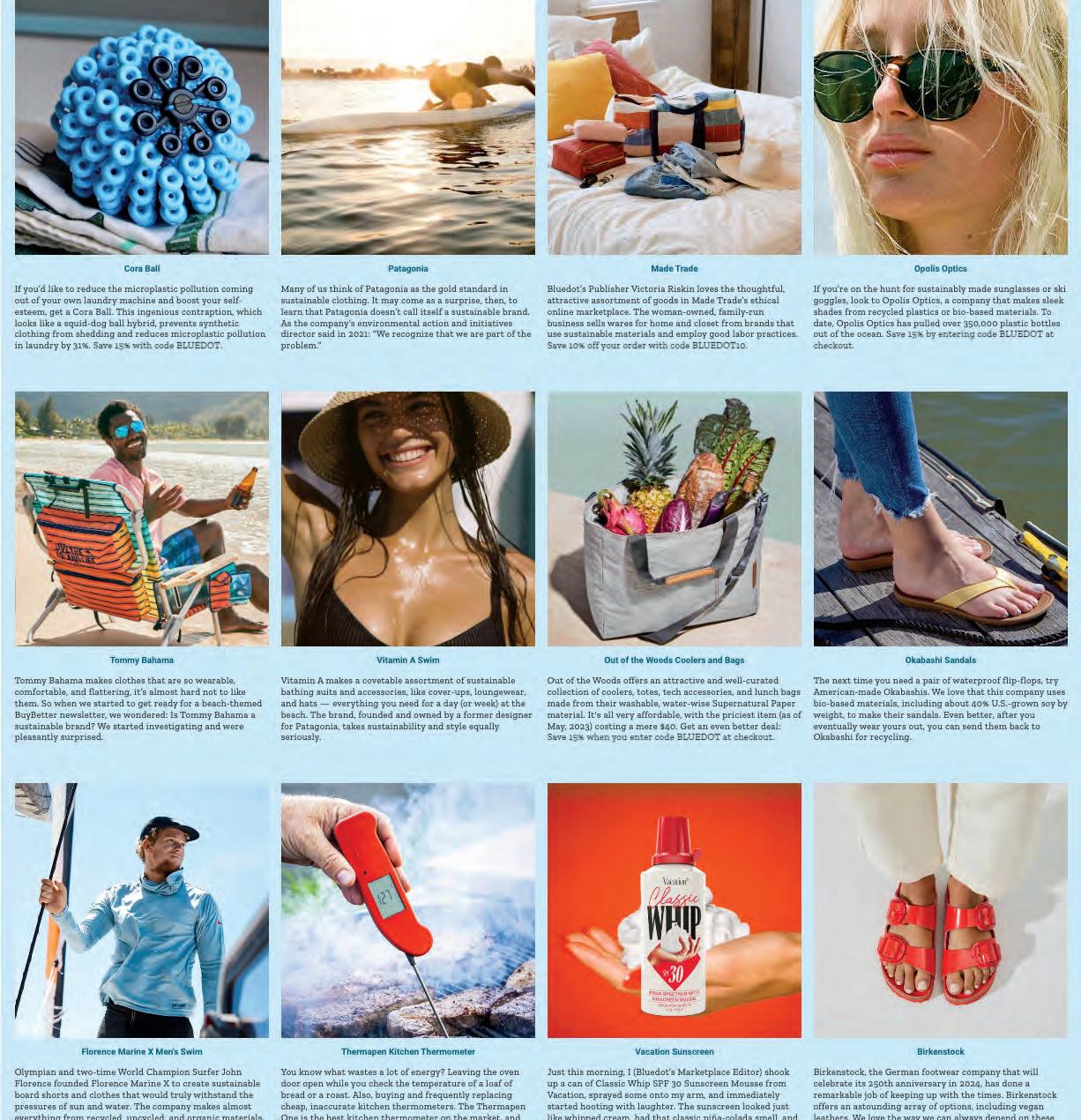

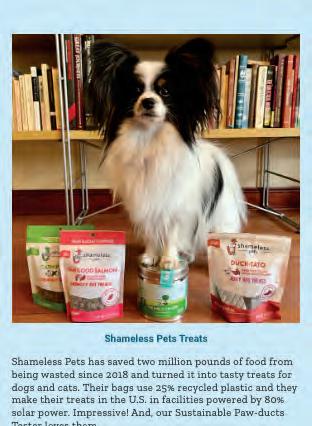
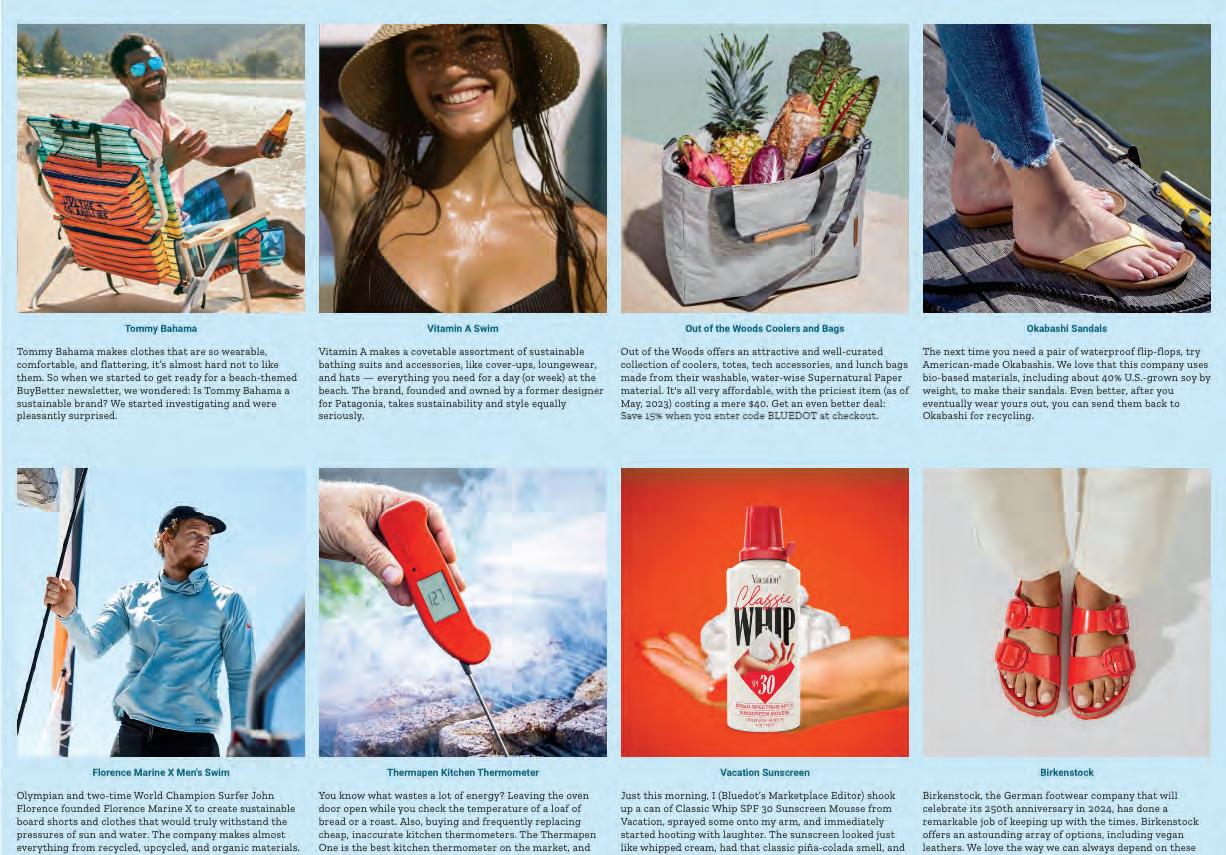
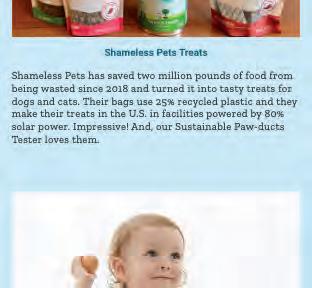
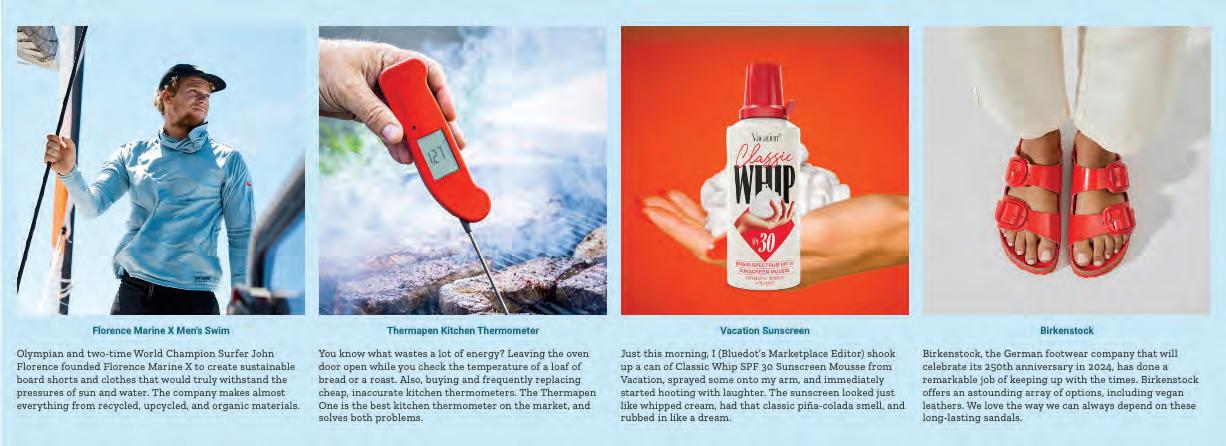

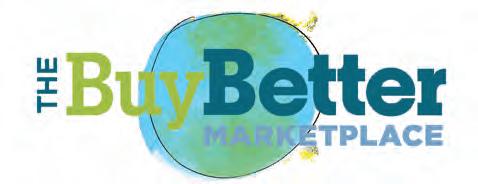

Martha’s Vineyard Bank is the first bank in Massachusetts to be certified as a B Corp. This means they had to prove (and must continue to prove) that they go above and beyond to meet the highest standards in social and environmental performance. But what exactly did the bank have to do to meet the scrupulous qualifications involved in becoming a B Corp, and how does the financial institution strive to create a better Island?
Bluedot Living talked with James Anthony, President and CEO of MV Bank. He spoke about the B Corp certification process, some specific examples of B Corp values, and how the bank continues to be a responsible and active corporate citizen in the community.
Bluedot Living: What is a B Corp? What does it take to become one?
James Anthony: B Corp certification is a third-party verification, confirmation, and affirmation of a company’s dedication to a number of things: its customers, its community and society at large, its employees, the environment, and good governance. It’s much like the organic certification for food products or the cruelty-free certification for cosmetics and consumer goods. The organization is committed to those ideals, and they have to illustrate that before they are certified.
The certification process is fairly rigorous. The heart of it all is called an Impact Assessment. This involves several hundred questions that all require confirmatory documents. B Lab is the company that administers that Impact Assessment. The company issues the certifications themselves and manages the process for ongoing assessment and recertification every three years.
BDL: How did you first hear about B Corp certification?
JA: I first learned about B Corp certification about six years ago from the bank’s attorney who was familiar with B Corps. As I described our objectives as an organization, she said that they very much aligned with the concepts of a certified B Corp organization. Our original intention was to use their free impact assessment online tool, that any company can access, to self-assess, [to gain] insight into the various things we could do to be a better organization, a better environmental steward, and a better corporate citizen.
As we went through the process, we realized that we were doing well, consistently exceeding most thresholds, so we embarked on the process of actually working toward certification. It took about six months to get aligned internally. We had to work with B Labs and with
the Massachusetts Division of Banks to make the necessary changes to our organizational documents. After that, it took about 18 months to work through the Impact Assessment.
MV Bank is the only Massachusetts bank that is B Corp certified. There are about twelve banks in the United States that are B Corp certified. It’s interesting and exciting that that number is increasing, and the number of B Corps worldwide has increased greatly recently. There are about 7,000 B Corps worldwide. When I first started learning about this, I had never even really seen the logo — now I see it everywhere.
There are some individual organizations that are very familiar, like Ben and Jerry’s, Patagonia, Seventh Generation, and Athletica; a long list of consumer goods companies are now displaying the B Corp logo. They are really leading the way in this movement and are doing a lot in terms of social and environmental change.
BDL: How is MV Bank committed to making social improvements, both internally and externally in the community?
JA: We donate 100 percent of our non-retained earnings to local nonprofits, which represents about twenty percent of our total earnings. (The other eighty percent is retained so we can capitalize the bank and stay safe and secure.) One good example is a major donation we
made for the early childcare center at Martha’s Vineyard Community Services; we donated one million dollars toward construction. We also purchased a flash freezer for the Seafood Collaborative, which allows them to flash freeze fish so they can provide local seafood to the Island and support fishermen.
Recently, we made donations to Island Housing Trust for affordable housing, which is a big interest of ours, along with workforce housing. There is a stratum of people who work hard every day whose income level excludes them from affordable housing, but given the high home prices here, they don’t have the money to buy a home.
There is also a whole series of questions about how the organization interacts with its employees, represents employee needs, and strikes a healthy balance between employee needs, customer needs, and community needs. [Our] intent to support all those elements is certainly ever-present and very clearly illustrated, I believe.
BDL: What about some sustainability projects you’ve undergone or environmental initiatives you’ve donated to on-Island?
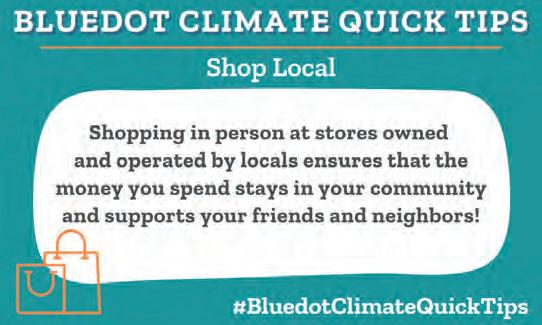
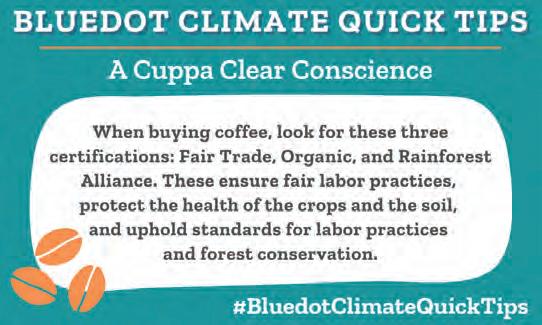
JA: One of the questions in the B Corp certification process relates to a carbon footprint assessment. We hadn’t conducted one before: we are not a manufacturer, we are not spewing anything into the environment, and we aren’t creating products that pollute. But we do consume electricity and fuel. Doing
the carbon footprint analysis encouraged us to look a lot closer at that impact. Although we don’t have renewables directly, all of our energy is produced by renewables. It’s more expensive, but we happily pay to have all of our electricity that powers all of our offices be 100 percent renewable. We are in the process of replacing our fuel-burning furnaces
maybe even a juxtaposition of traits. I am a pretty devout capitalist, and at the same time I am concerned with and motivated by creating a sustainable environment. The B Corp logo says “Businesses as a Force for Good,” and we have sort of coined that as “Banking as a Force for Good.”
I try to marry that motto with my own personal concerns, while also making sense of what it means to be a mutual bank in a capitalist economic structure. As a mutual bank we don’t have shareholders per se, and everything I had been taught in business was to serve the shareholder. We extended that to say the shareholder is our community, so how do we serve the community financially? That spawned the concept of paying dividends as charitable donations.
BDL: What gives you hope for the future of our Island community, environment, and economy?
with electric heat pumps which will be powered by renewable electricity. We will go completely away from fossil fuels. Additionally, we’ve made a number of donations to Island Grown Initiative, along with several other donations to environmental and sustainability groups.
BDL: How do some of your personal focuses align with MV Bank and B Corps? What are you passionate about?

JA: I’ve found myself to be an uncommon combination of traits,
JA: I think you see the discussions happening around affordable housing, around the environmental aspects of the Island like the toxification of ponds or the impacts of nitrogen on the Island ecosystem. The energy in these discussions is a wonderful indicator of the future. Where people focus their creative minds and innovation, they will make a positive impact. There is a lot of ground to cover; there are a lot of pretty audacious challenges to overcome, but I have a very positive outlook on the future of the Island.
Before you come, please consider the contents of your luggage. Single use items like plastic water bottles, food items with tons of packaging, and other disposable items become trash we have to ship off island, increasing our carbon footprint. Is there a reusable option for any of these items?
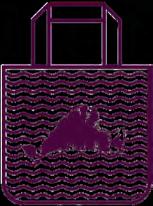
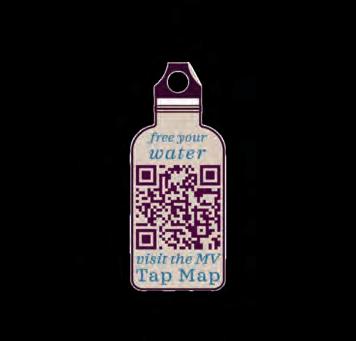
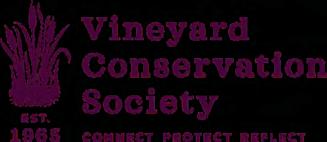
Taking
grocery
Welcome to Your Daily Dot. Each weekday morning, we’ll send you a Climate Quick Tip — easy advice for Earth-friendly living — and on Saturdays, Dot will answer one of your questions (write her at Deardot@bluedotliving.com). On Sundays, Dot rests.



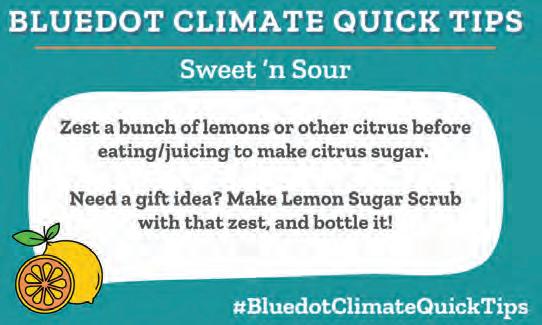
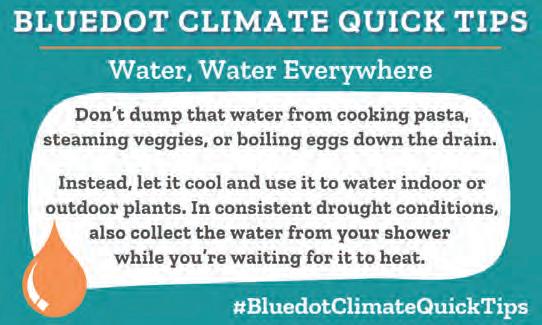
Dot has gone social! Find her on Instagram and Threads @deardot-advice

What You Can Do
Six Steps to Preserving our Ponds
What we do on the land affects the nearby water. With the Vineyard’s sandy soils, chemicals and fertilizers leach into our groundwater that flows into our ponds and wells.
Grow a Vineyard lawn
Reduce your lawn size
into a sweeping meadow. The base of the grassland meadow could be little bluestem grass, butterfly weed, Asters, and other native flowers. Mow winding paths to the water, your garden shed, or pool. To maintain the meadow, mow high once in the winter/early spring (to protect ground nesting birds), leaving the clippings on the ground to reseed.
and structure over the four seasons. Ninety percent of the world’s sandplains grasslands are on the Cape and the Islands — let your yard add to this incredible landscape. You will be rewarded with a world of butterflies, fireflies, songbirds, buzzing bees, and more.
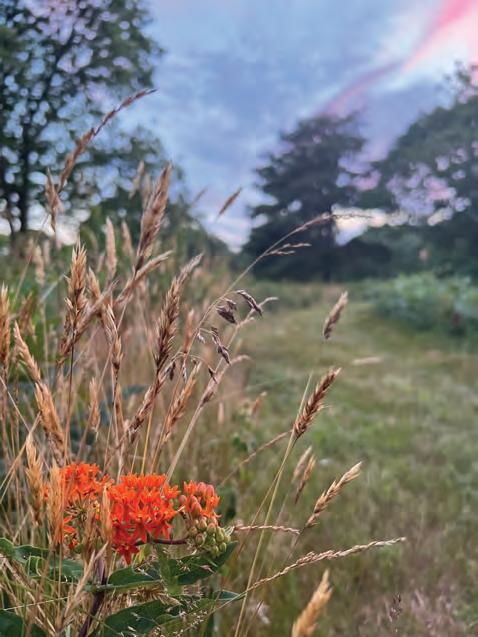
5 6
Use the resources on-Island
Support land preservation efforts
Create or leave a vegetative buffer
Add MV native plants
–Anne Mazar
Anne Mazar is a board member of the Great Pond Foundation and lives alongside the Edgartown Great Pond. See the story of her house, and the restoration of the native sandplain here: bit.ly/Great-Pond-House.
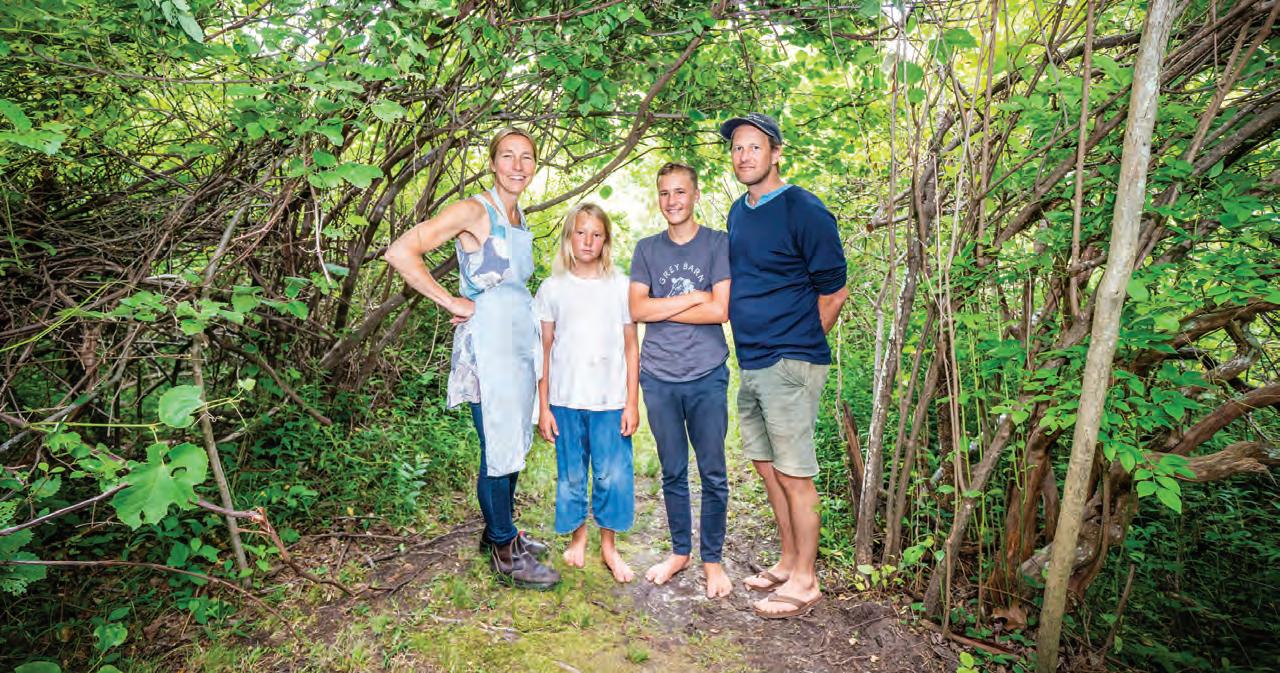
“Buy No New Stuff. Challenge yourself to buy nothing new for one year. If you need something, try to buy it used locally (Thrift Store, Dumptique —reopening any day now — MVStuff for sale). Or try to borrow/share it. Or consider an alternative. Or go without it. If you’re able to go further to support NoNewStuff, volunteer at the Dumptique or thrift store.” –Odin
“Involve yourself in politics whenever you can — from the local to national level. Individual choices only go so far in regulating our consumption and transforming our society. If we really want to change things, we need to focus on collective decisions.” –Runar Finn
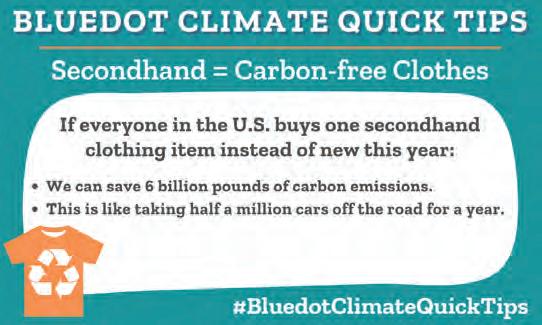
In the summer of 2005, I sat across a table in a restaurant with my friend. We had just heard that Canada, where we both lived, had legalized gay marriage. My friend had marched, petitioned, lobbied for many years, though he insisted he never planned to marry. “We worked so long for this,” he said. “And then …” He shook his head. “It’s like it happened overnight.”
I think of that exchange often when I join those working so hard to address the climate crisis. We march, we petition, we lobby. And then … one day, we hear that Harvard has agreed to divest from fossil fuels. That a species is off the endangered list. That renewables are powering entire countries. And though they might seem like small victories, they point to the possible.
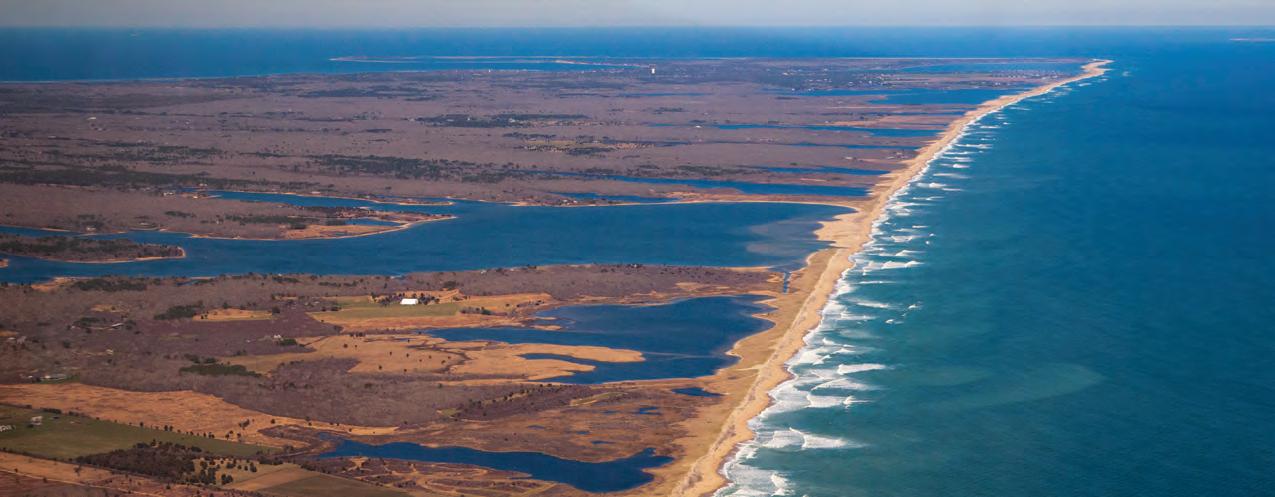 By Leslie Garrett
By Leslie Garrett
They point toward a future that we can’t yet see, can scarcely imagine.
The philosopher Jonathan Lear calls this “radical hope.” Radical hope requires that we summon the ability to imagine solutions, despite what’s happening around us. Radical hope is not to be confused with more passive optimism. As Lear puts it, “Radical hope anticipates a good,” although we may not yet be able to conceive of how that hope will take shape. Radical hope is not the stuff of pithy phrases or bromides, rather it asks us to exhibit courage and
flexibility and a creativity to respond to challenges. To see radical hope in action, look no further than Greta Thunberg, the Sunrise Movement, Indigenous water protectors, and so many others who refuse to give in.
Radical hope is not about ignoring the grief and fear I and, perhaps, you feel as we absorb the magnitude of the climate crisis. But I take courage in the work being done by these activists, young and old — those who, in Lear’s words, “facilitate a creative and appropriate response to the world’s challenges.” Feeling both the fear and the promise is what radical hope is. It reminds us that our world continues to hold surprises. Victories that are small until, suddenly, they are big.
rad-i-kuhl hohp ]SOUTH SHORE PONDS, WINTER, BY SAM MOORE.
What makes a great pond great might be its outsized role in the nature and culture of the Island — as a place where people and creatures gather, where the small Island meets the infinite sea, and where the processes of change that shape sand and life march relentlessly forward.
–Sam Moore in the story "In Search of Greatness: Martha's Vineyard's Great Ponds."
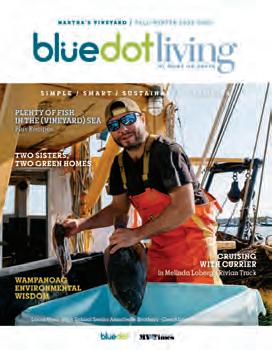

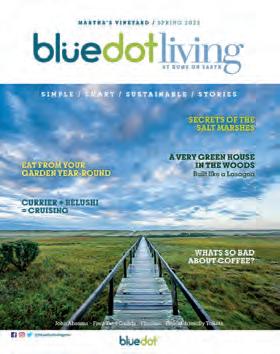



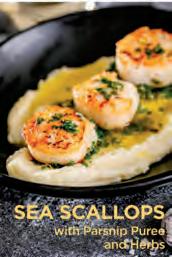
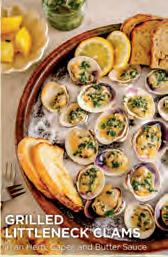
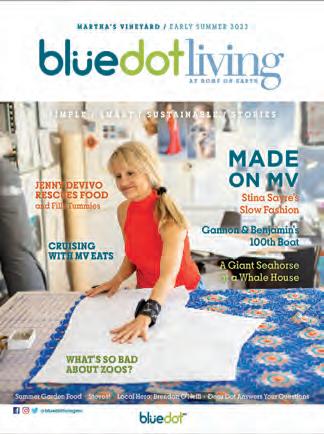

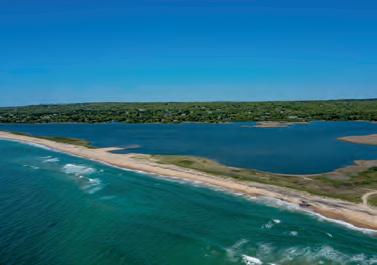
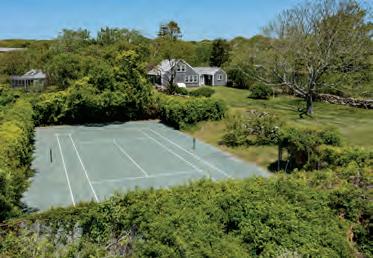
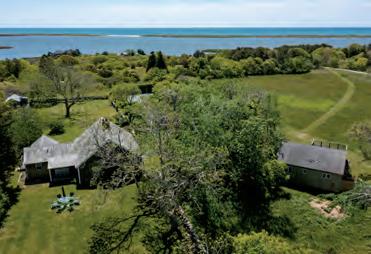
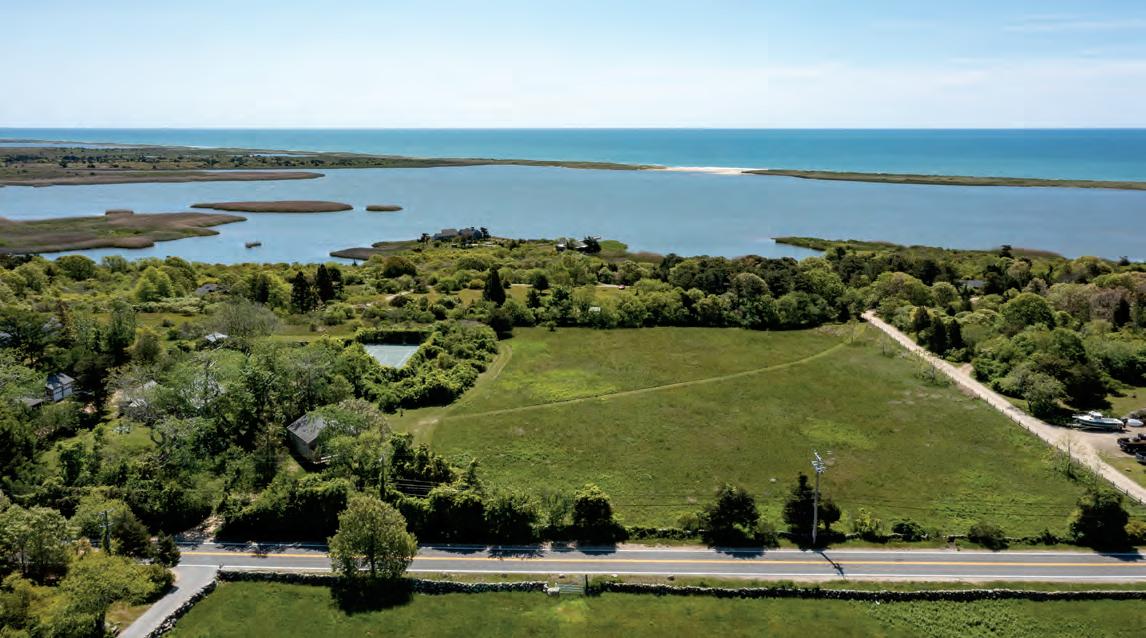
The 6.1 acre property includes two homes and cottage, open meadows, manicured lawn, beautiful trees, and paths that lead through open meadows to the dock on Chilmark Pond. The historic main house is in lovely condition with three bedrooms and two full baths. The south side of the house has water views over Chilmark Pond to the Atlantic Ocean beach. There is a single-bedroom cottage with a bath as well as a separate guest house with two bedrooms, full bath, kitchen, living room and screened in porch. Additional fun spaces include a garage, a large shed, a private clay tennis court, and deeded access to Chilmark Pond and the south shore barrier beach. Build another home on the property as well as renovate the existing home. A distinctive opportunity in Chilmark that will not disappoint. Exclusively offered at $4,950,000.
